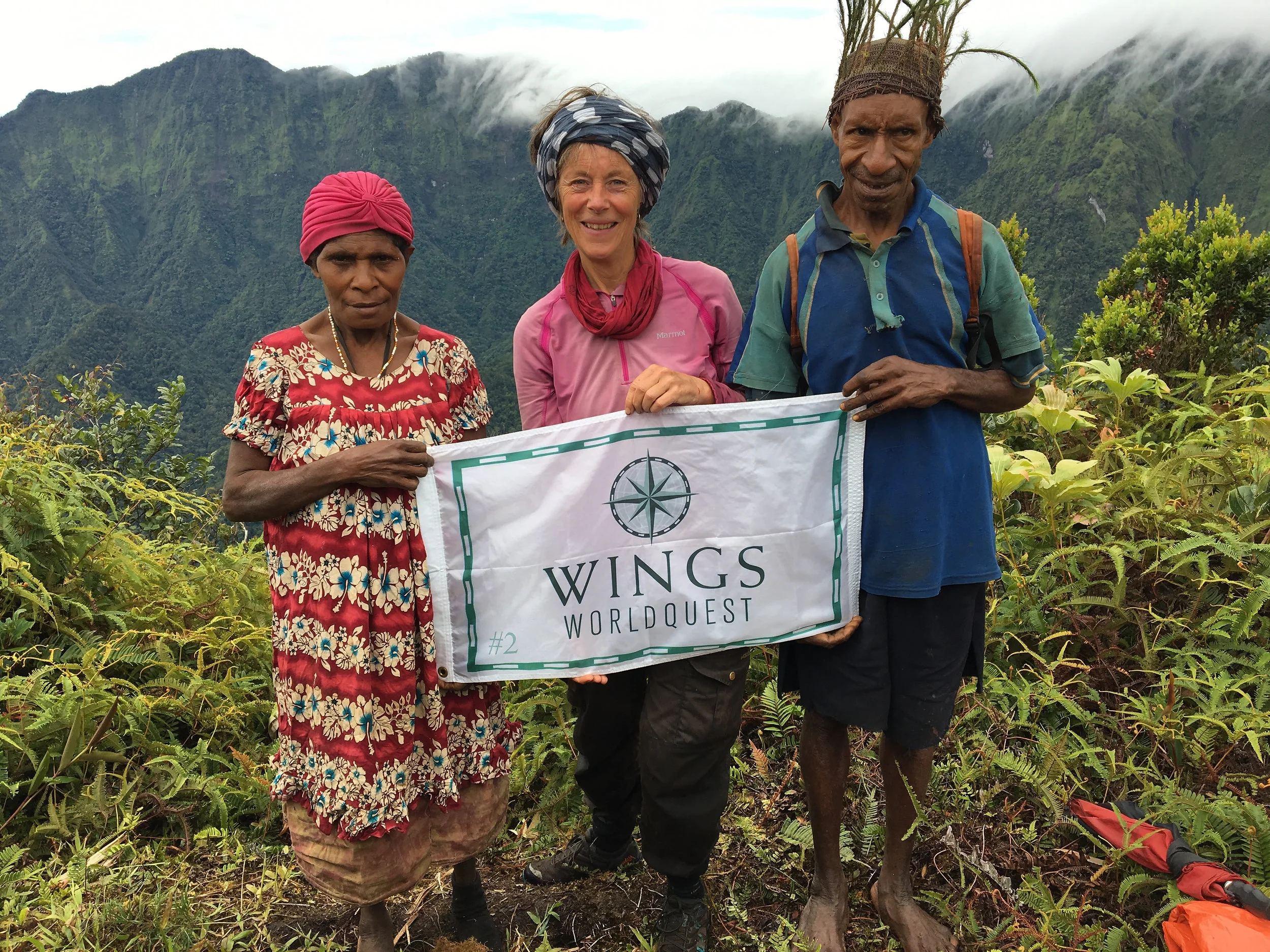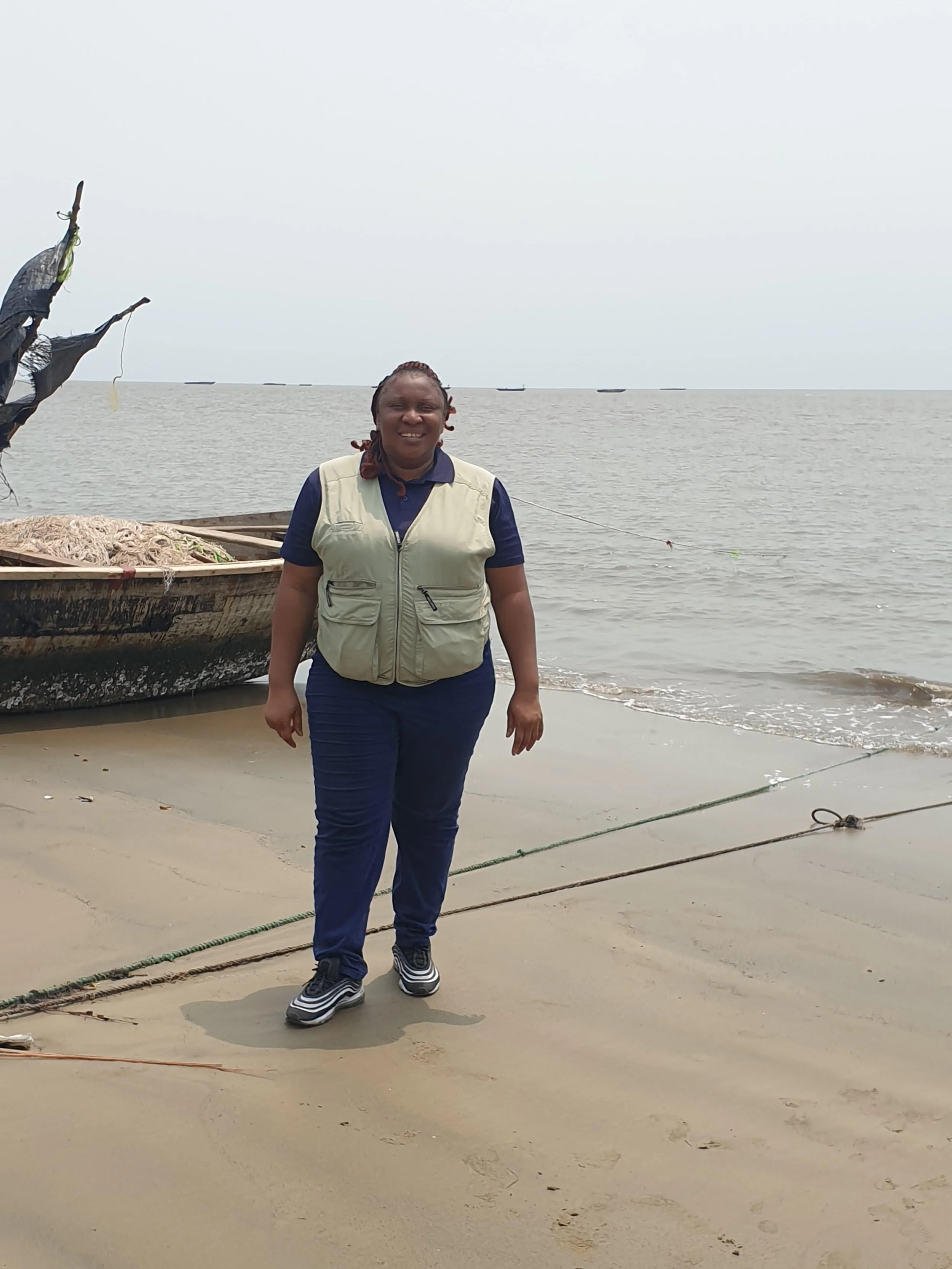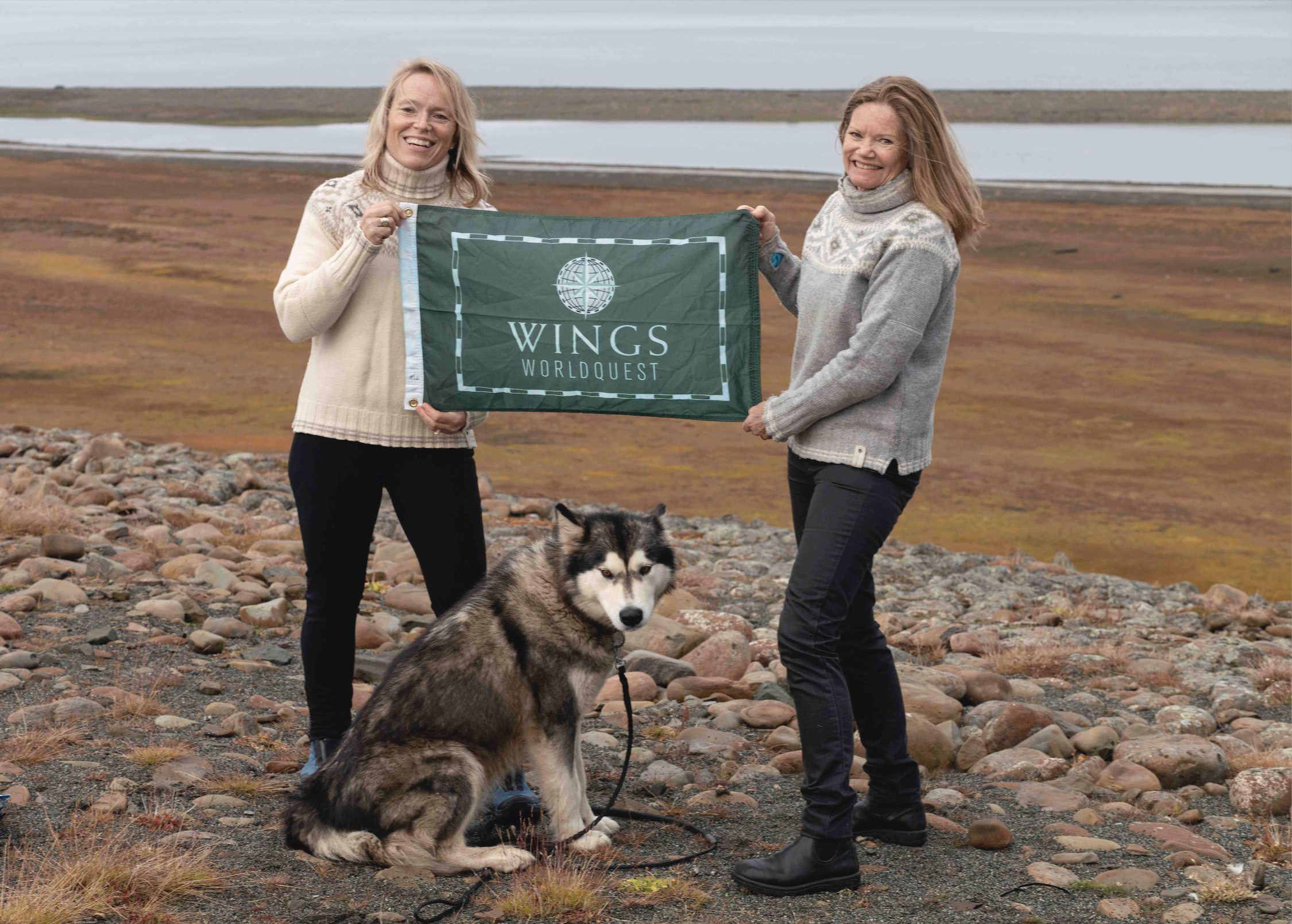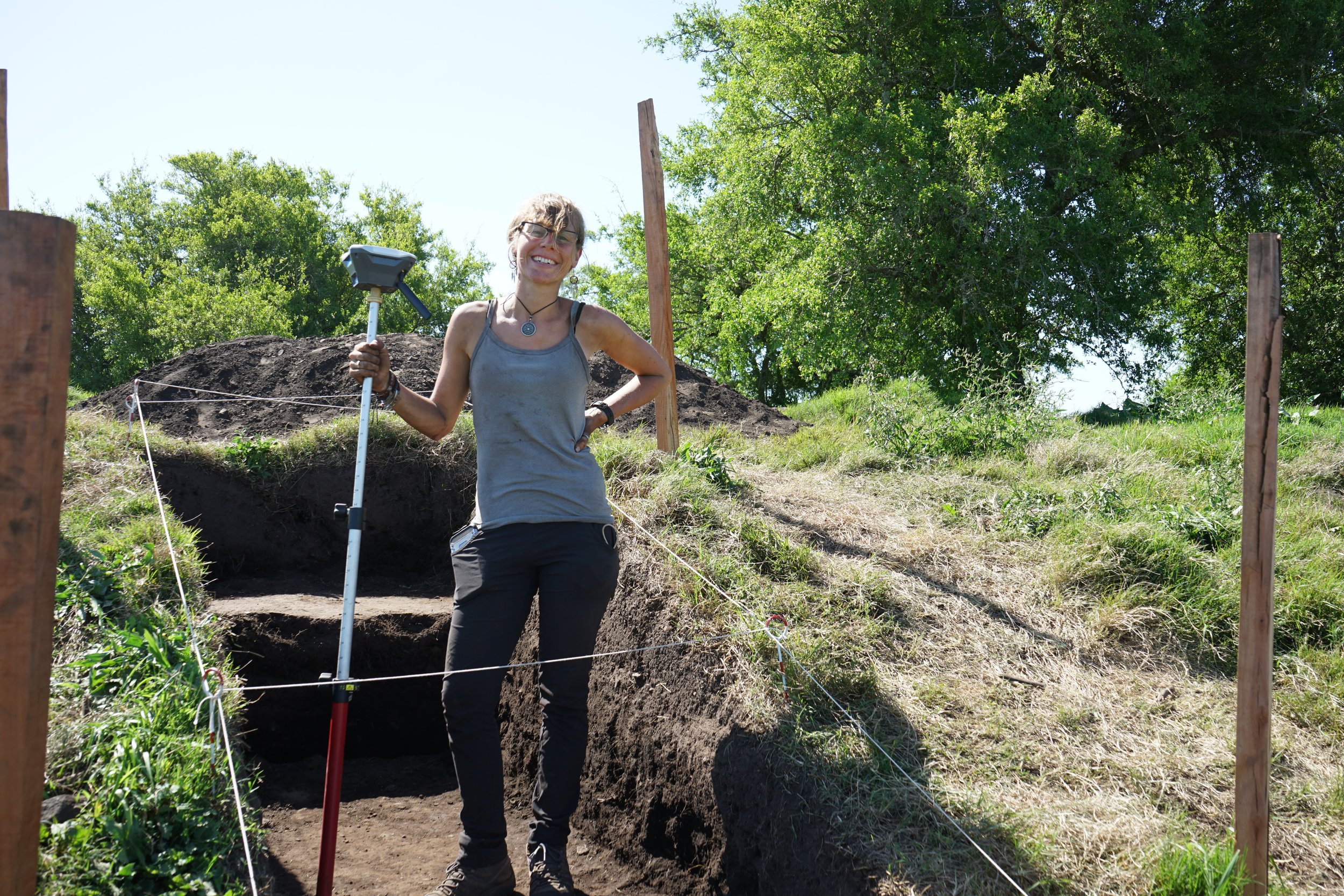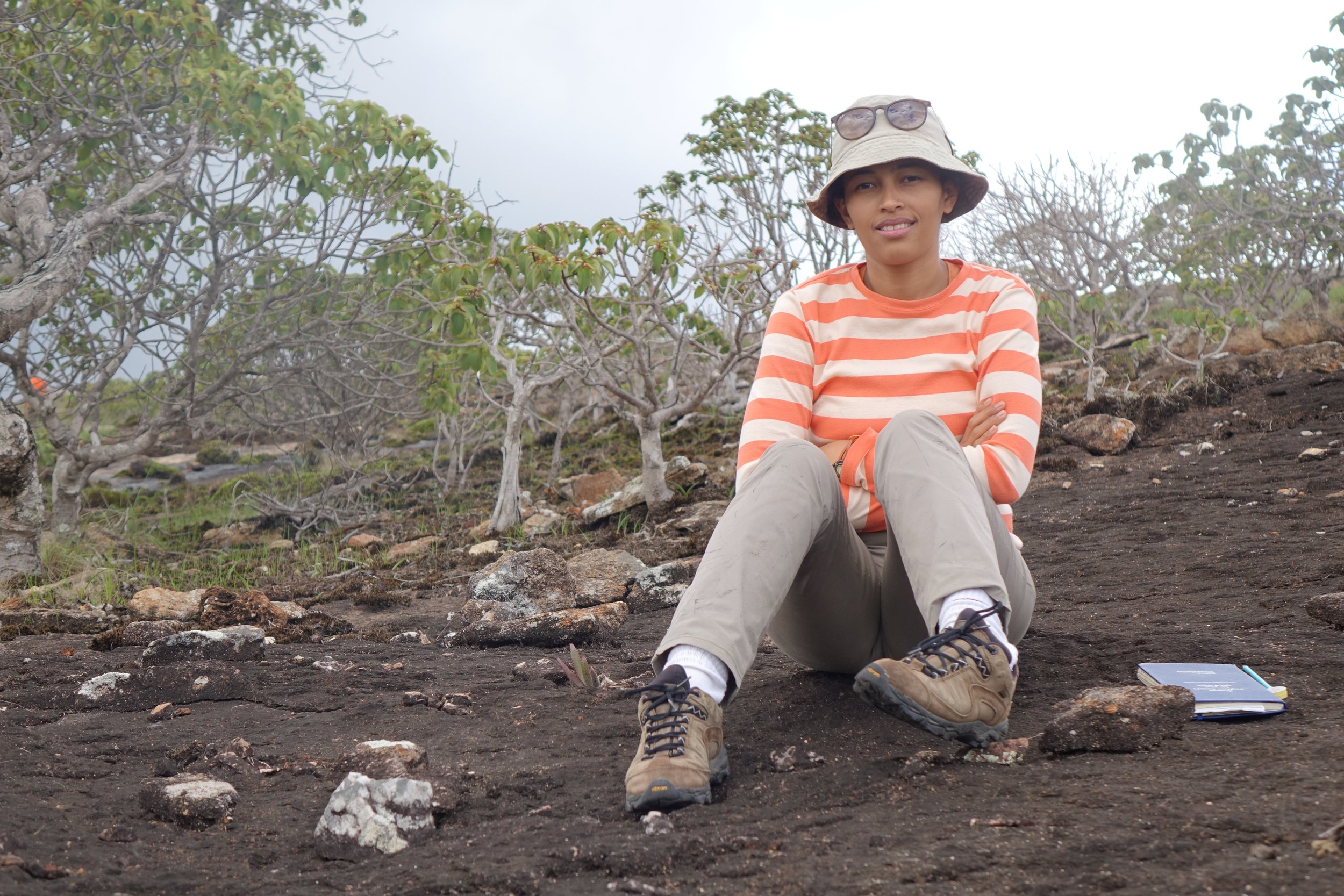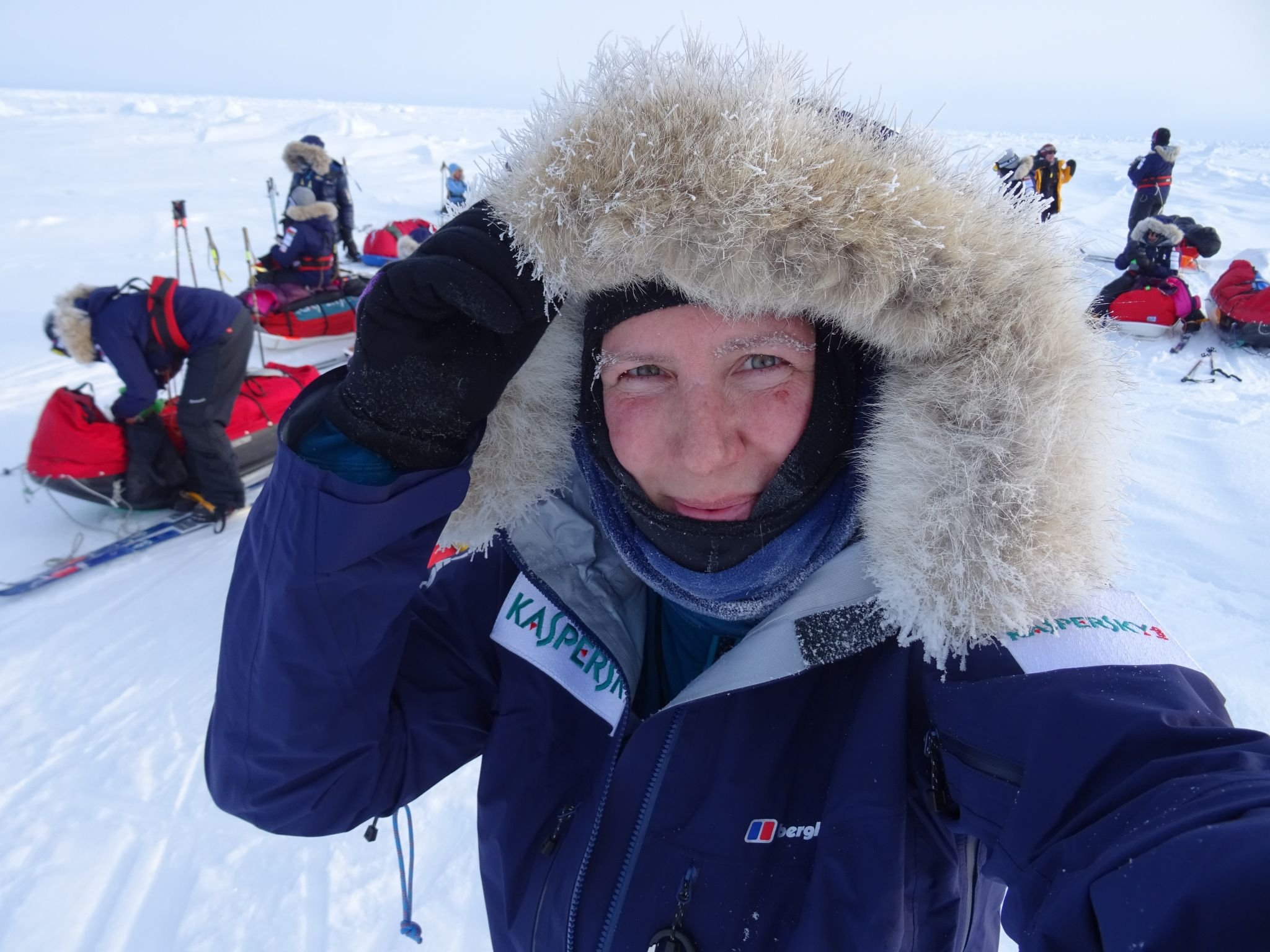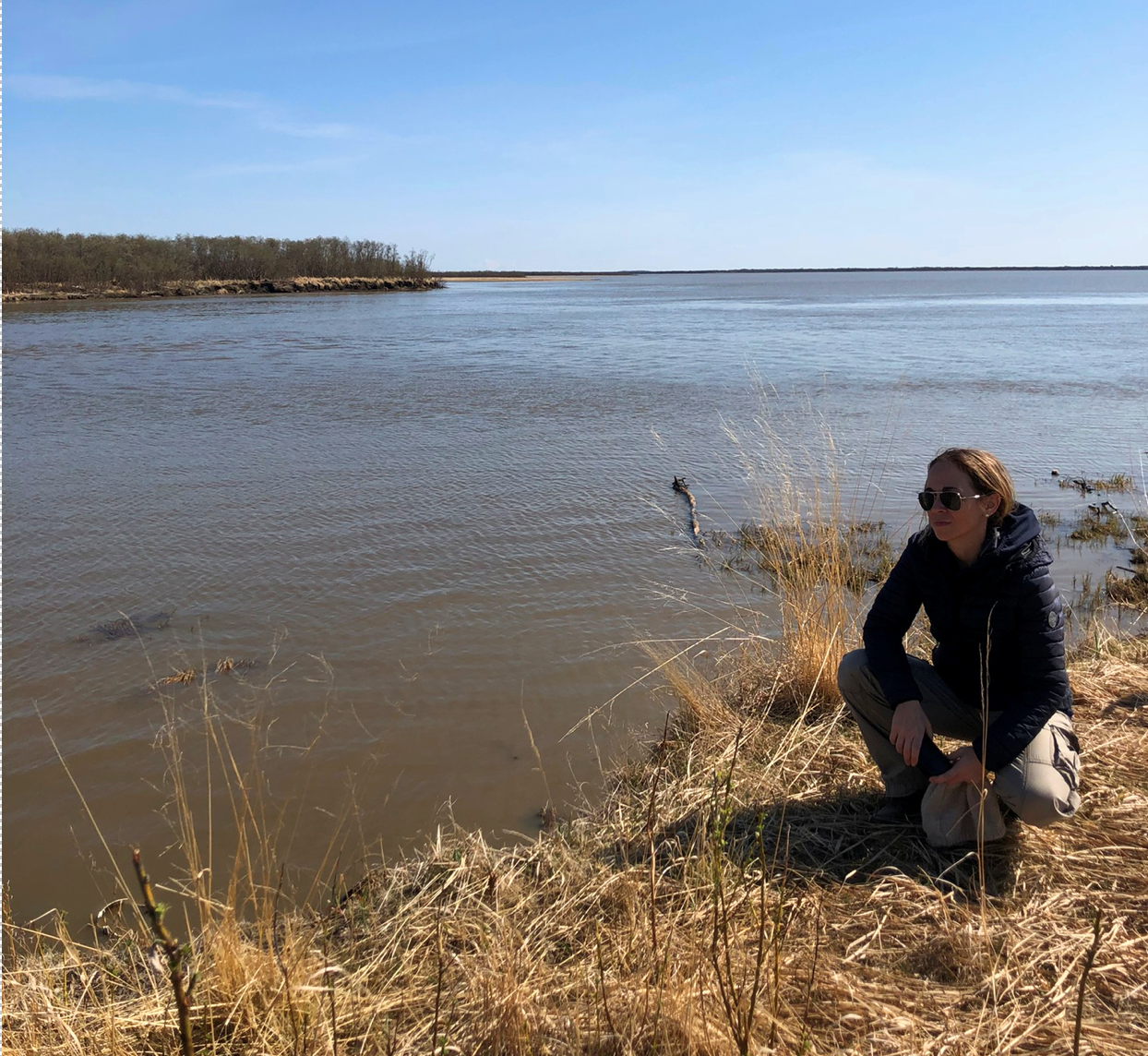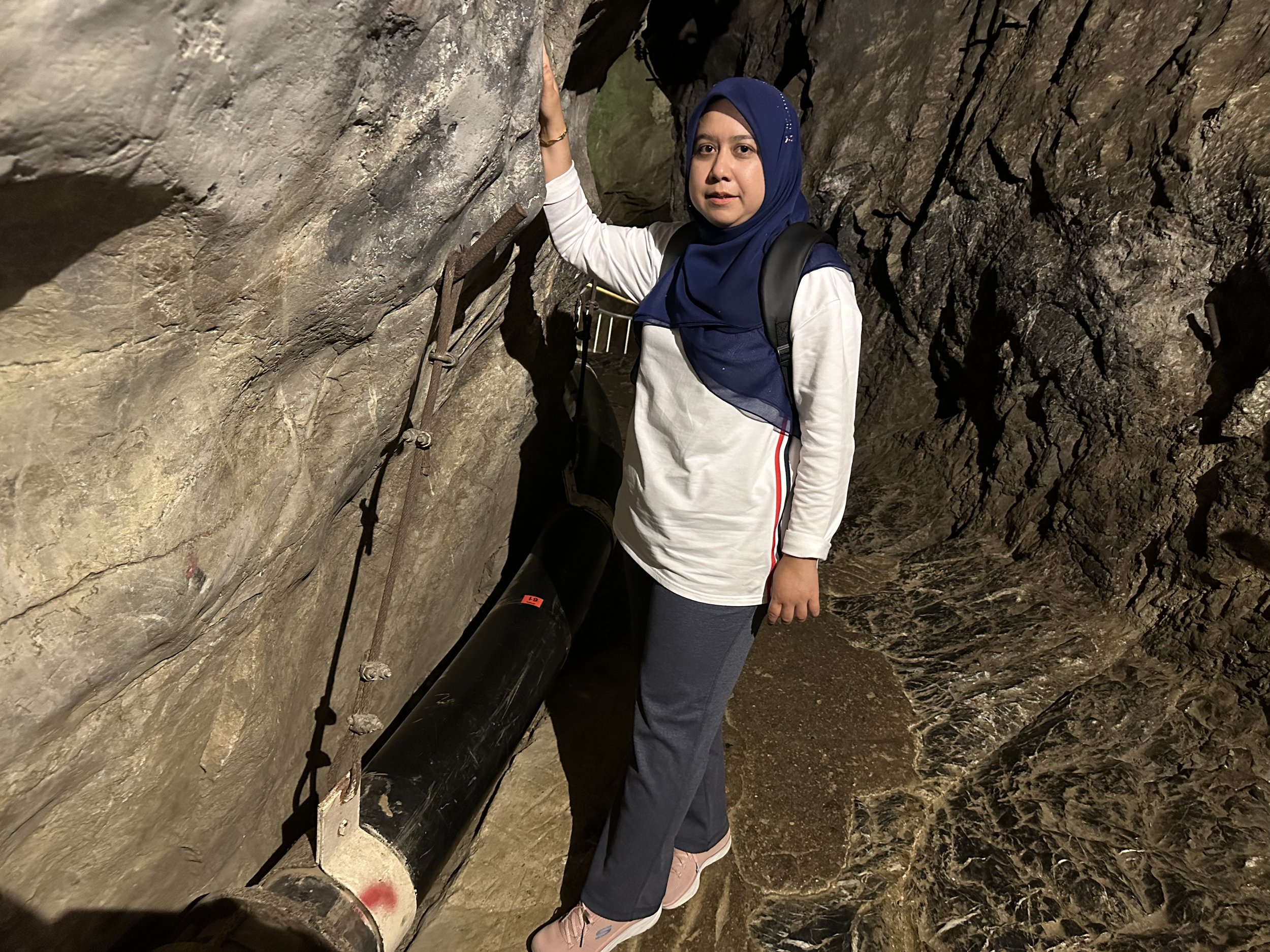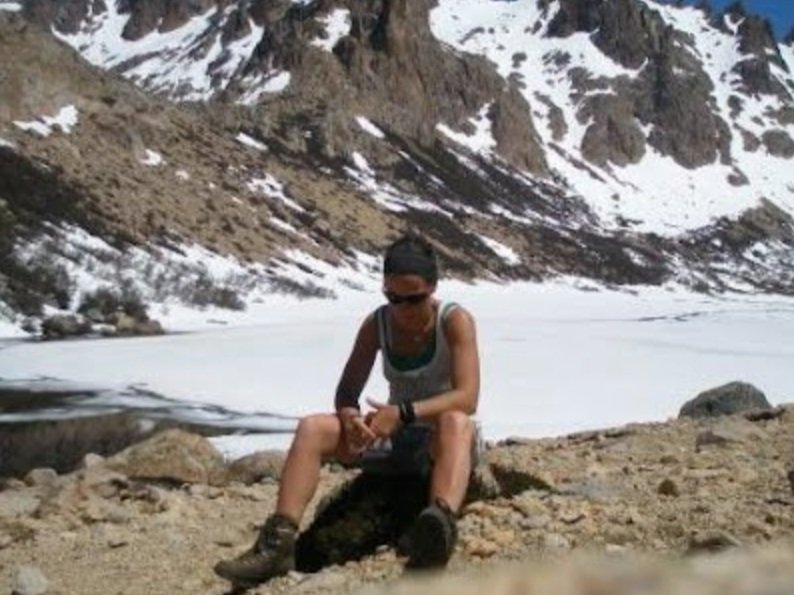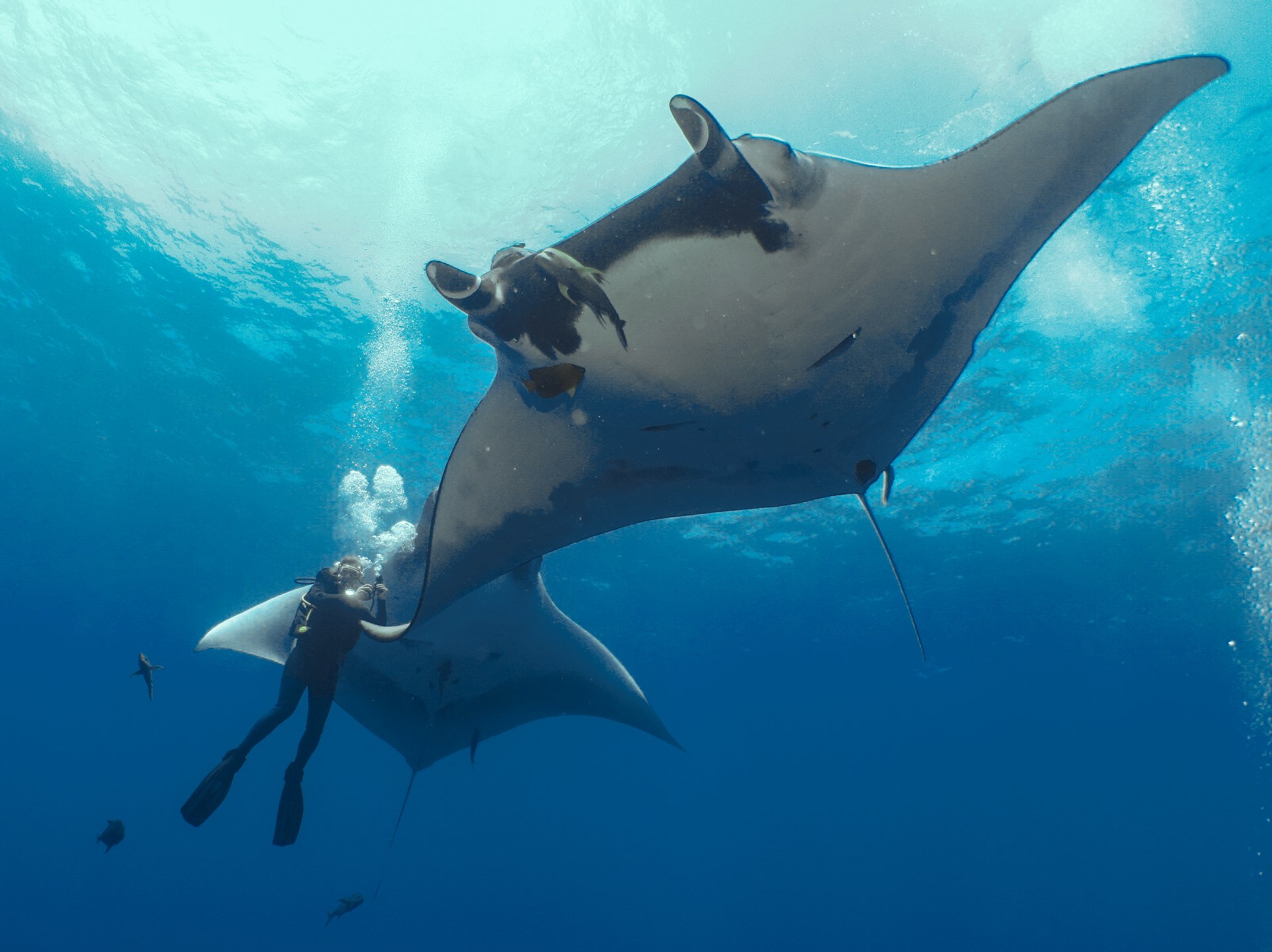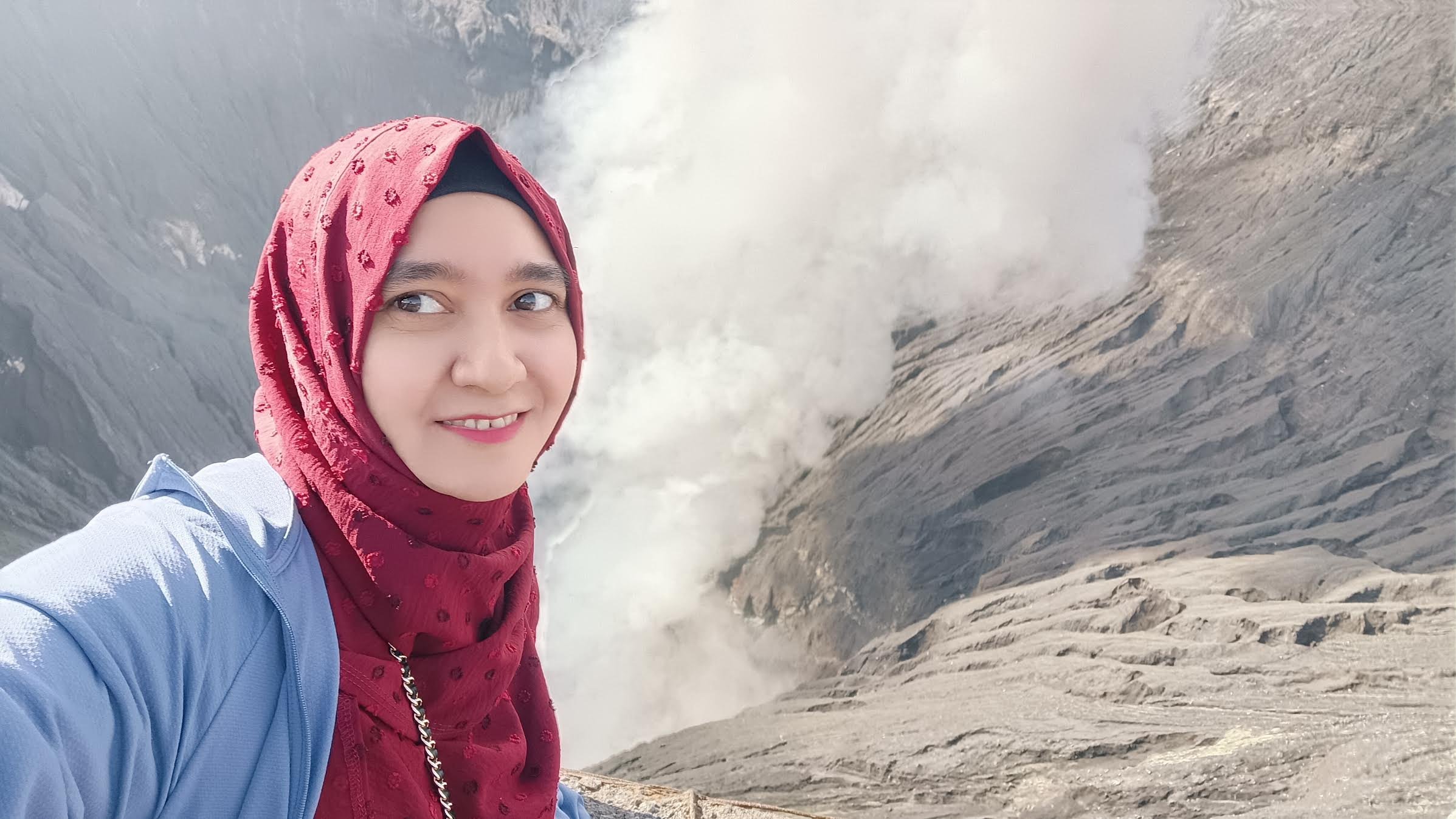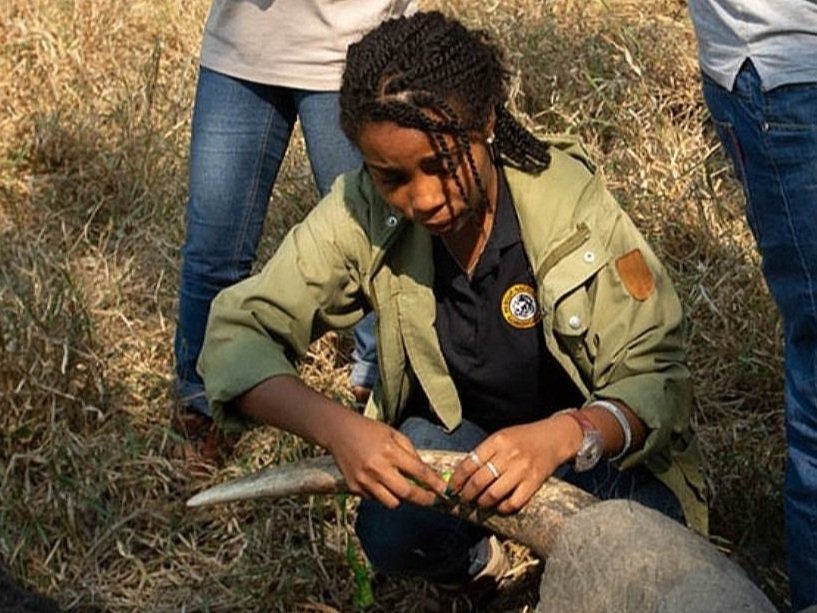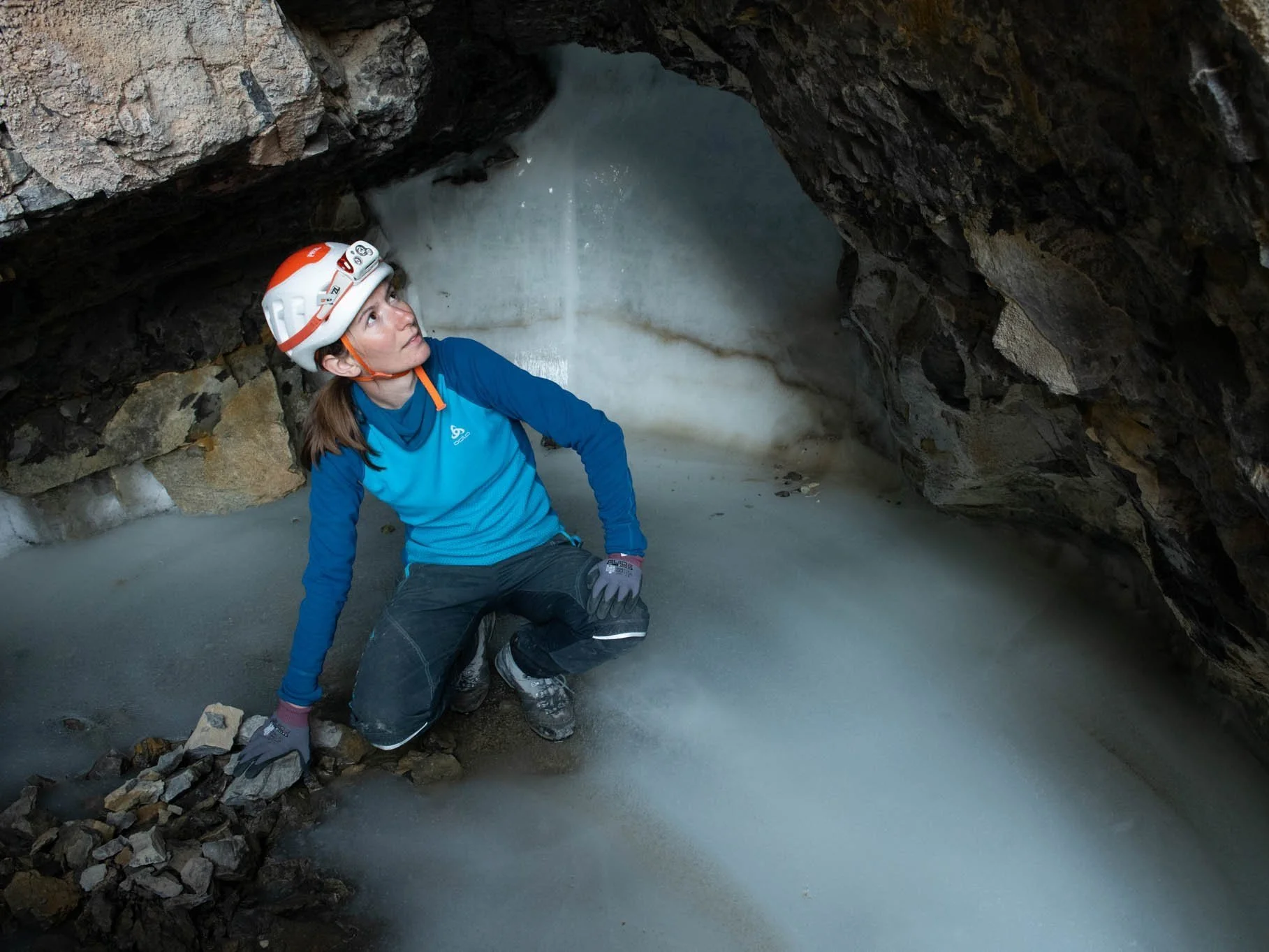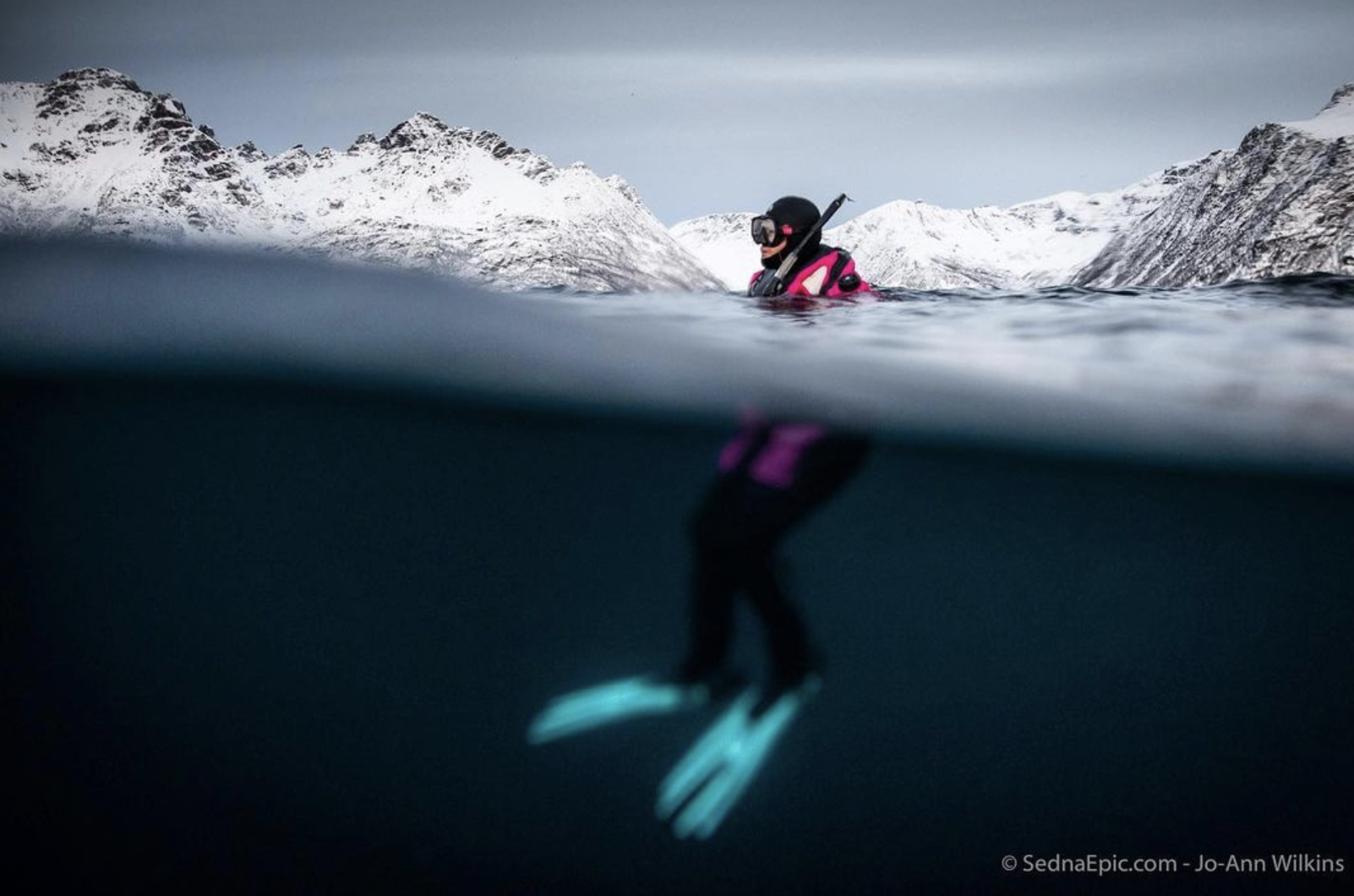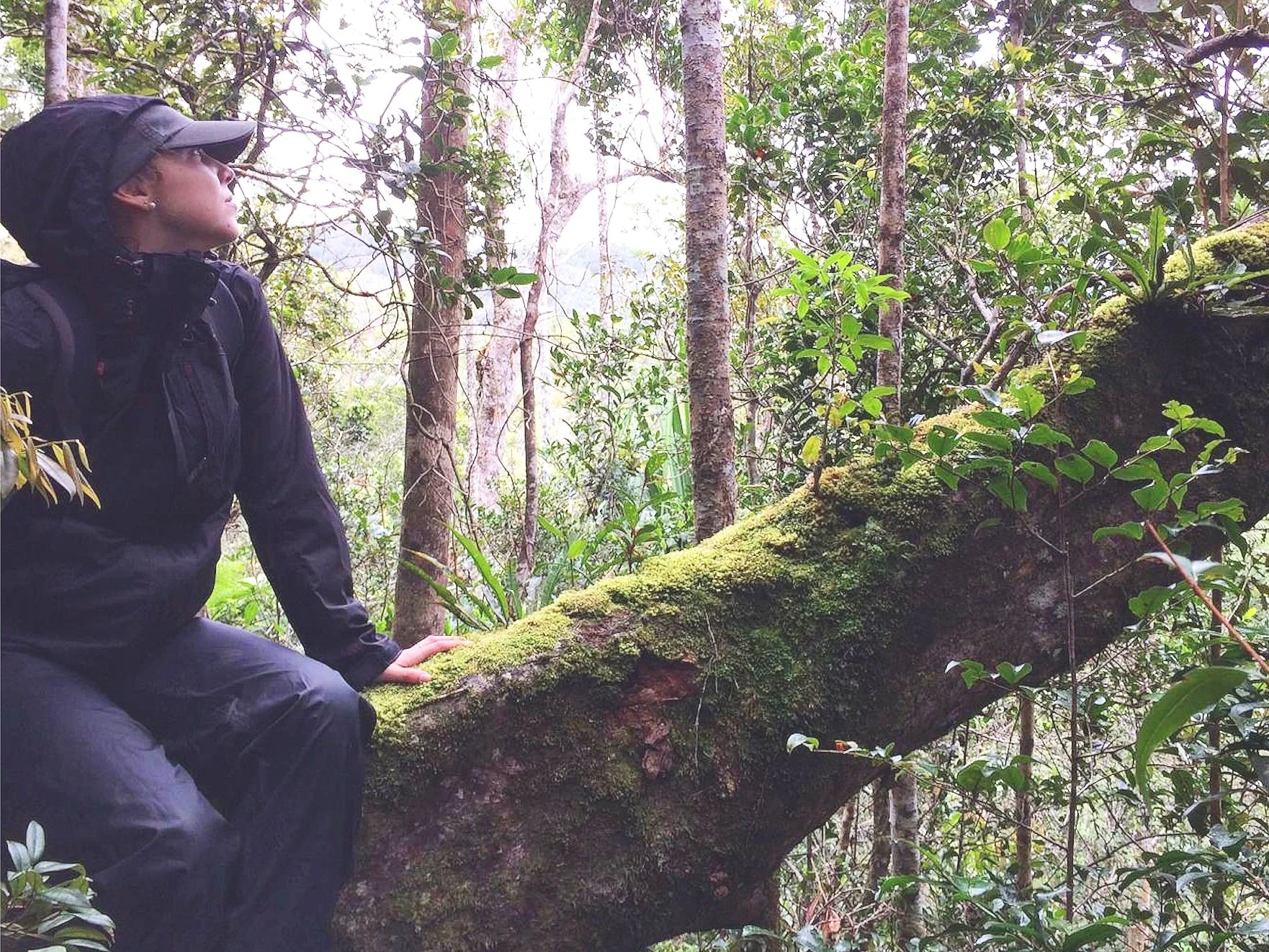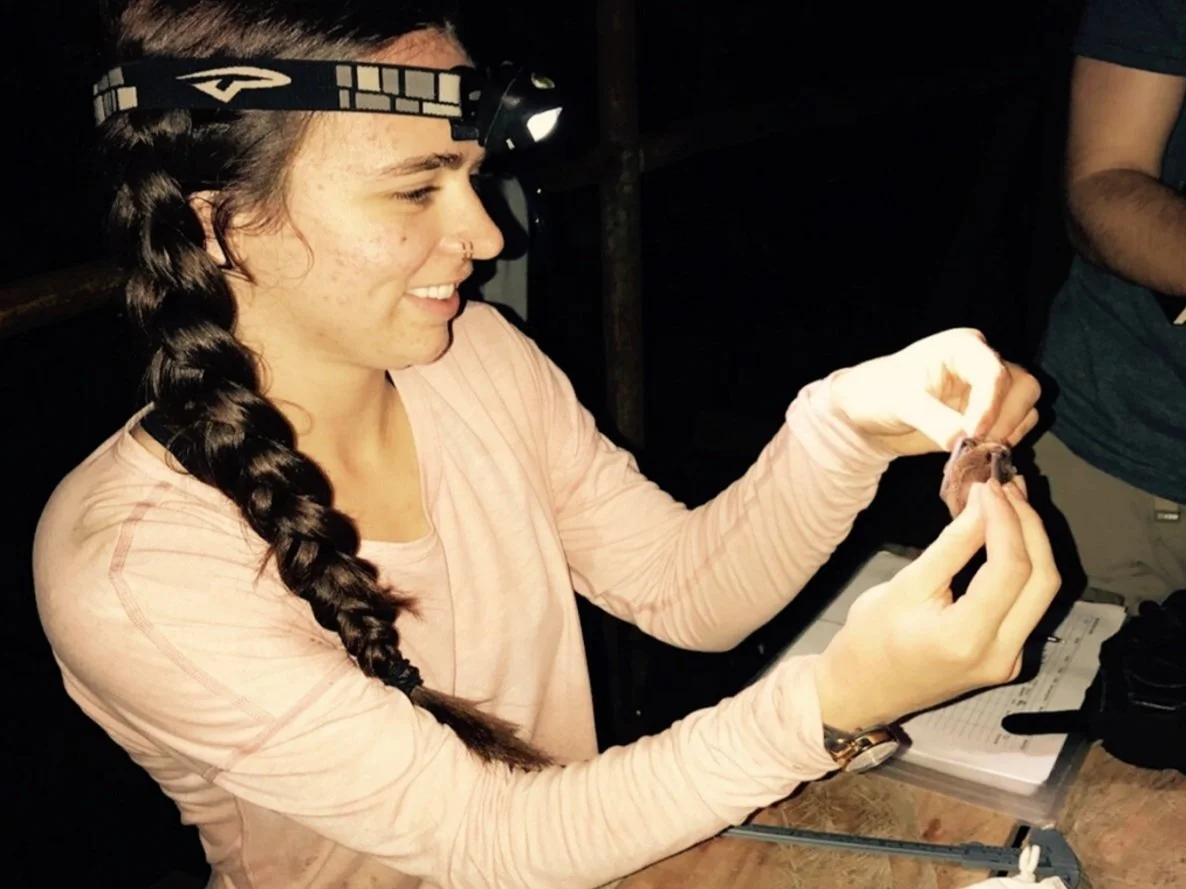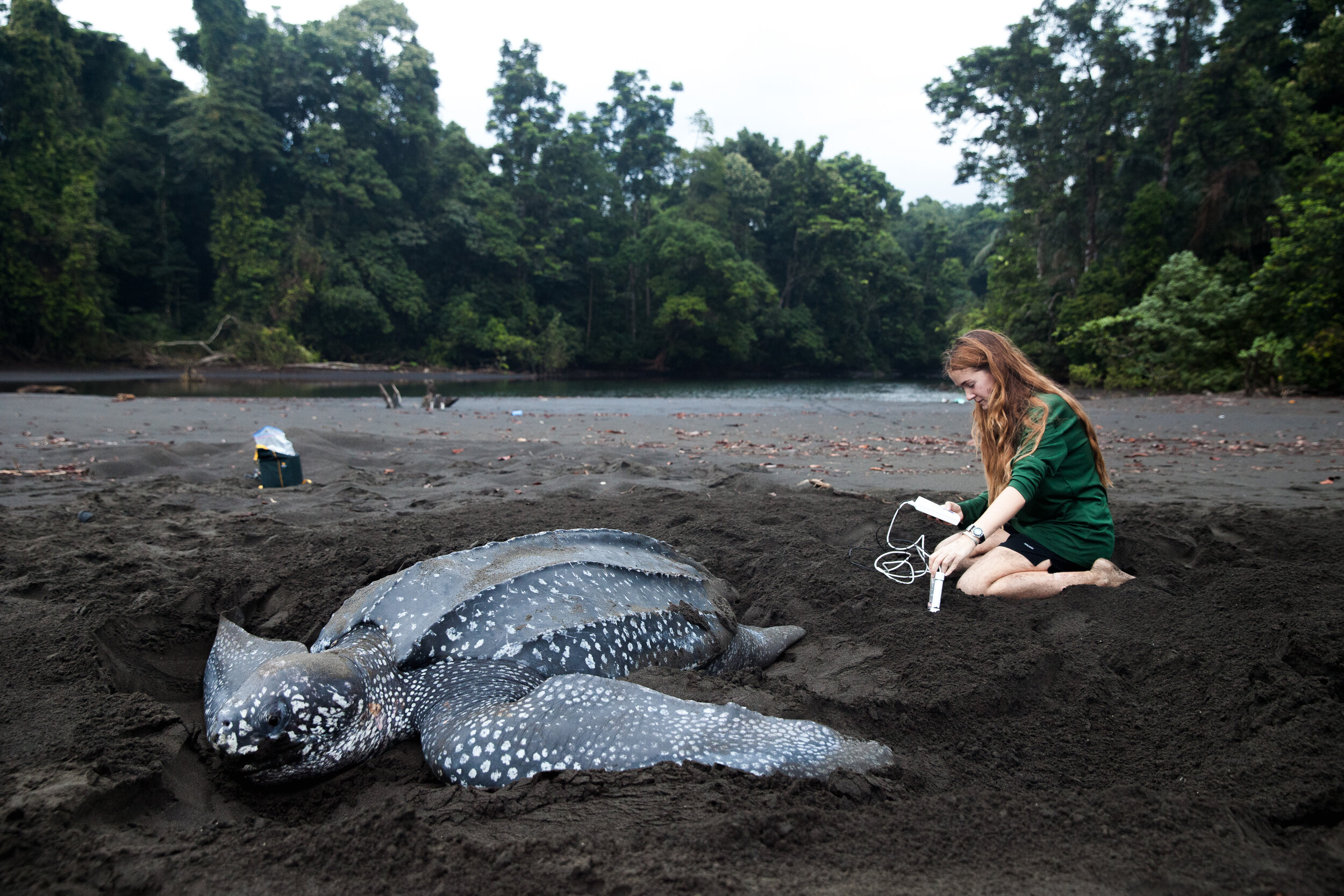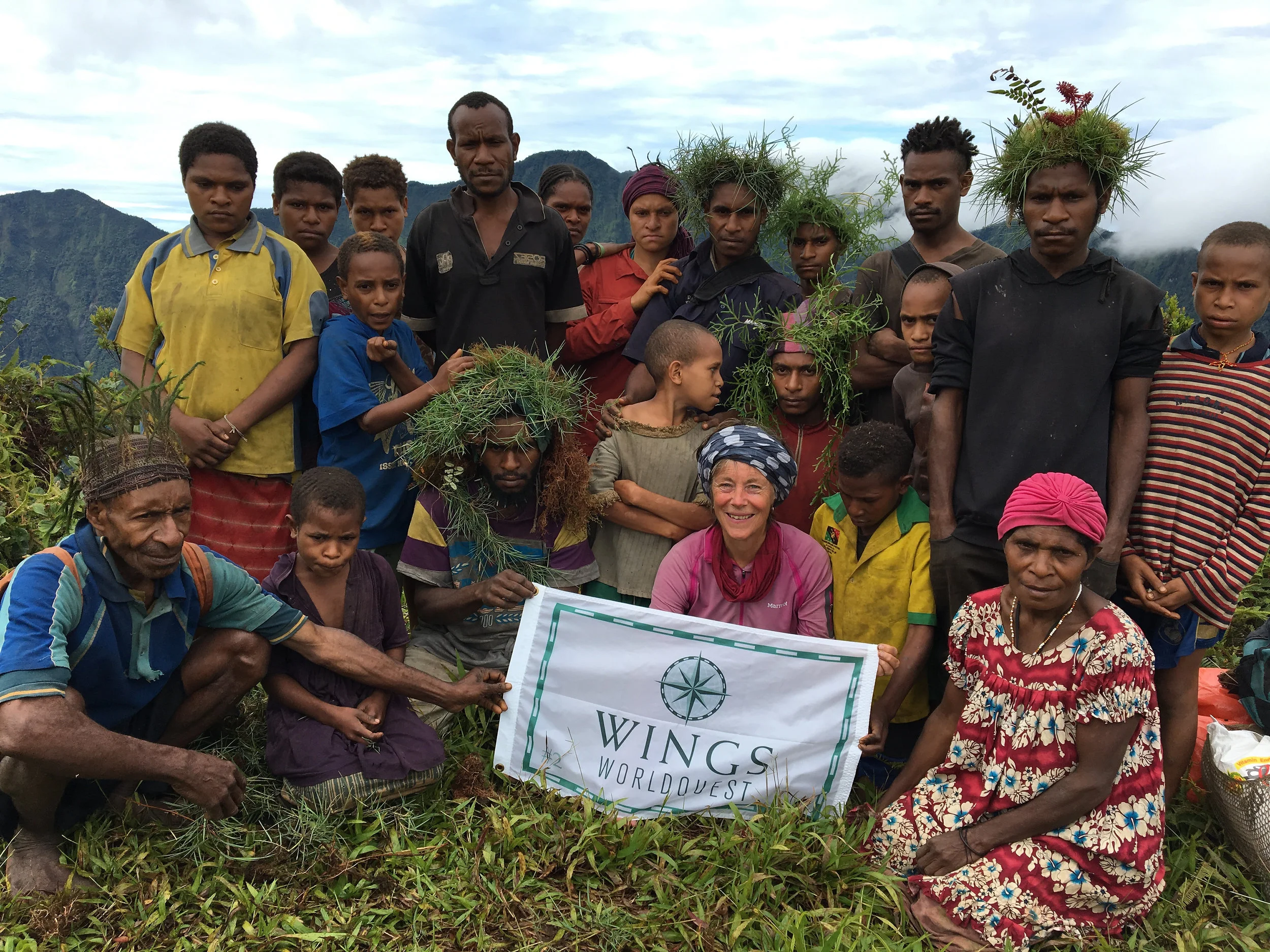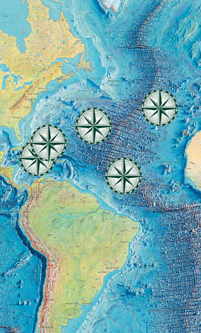Ann Bancroft, Liv Arnesen and the Access Water Team trekking to the Gangotri Glacier
The WINGS WorldQuest Flag is recognized as a symbol of excellence in discovery and knowledge and certifies the significance of its carrier's endeavor. More than 100 scientists and explorers have flown the numbered WINGS flags across every continent and at both poles, establishing a unique bond of high achievers, creative thinkers, and bold leaders notable for their courage and commitment to discovery.
Flag Carriers are women leading original field research or documentation related to an expedition and/or research project that focus on investigating questions about the nature of our world and advancing conservation efforts on land, air and water through science and advocacy. This honor comes with a $1,000 grant. Flag Carriers are not associated with tourist trips or paying participants on tours.
As part of their expeditions or research projects, accepted Flag Carriers write reports, produce films, and formally share information about their findings with the scientific community and the public using traditional and social media. A final Flag Report is published on the WINGS website. Flag Carriers also participate in a virtual event hosted by WINGS showcasing their research or a topic in their field, which may include a webinar, podcast or panel discussion.
WINGS is currently accepting Flag Carrier applications
2024 Flag Carriers
Three Otters Media - Antarctica
Tiffany Duong, Aya Walraven, and Dr. Louise Edwards have come together to create Three Otters Media (TOM), which leverages virtual reality and immersive technologies to amplify the benefits of connecting with nature while reducing environmental externalities from travel. With Flag #32 in hand, TOM heads to Antarctica with the goal of creating a science-based digital world to help people connect to the world’s final frontier and understand why it matters to the stability of the planet without having to travel here.
While on expedition they will use firsthand experience and the strategic collection of assets—videos, images, and sounds—to craft an immersive experience that addresses critical environmental challenges experienced in the Antarctic region, such as the local and global impacts of melting ice shelves and the ongoing ethnographic questions of who is included in polar research programs. The culmination of their work, the groundbreaking virtual reality (VR) game, 'Stories from the Southern Seas,' will allow players the opportunity to make their own discoveries about and connections to this remote continent.
Drawing from Tiffany, Aya, and Louise’s combined skill set, TOM builds on the inherent strengths of VR and the proven benefits of games-based learning by applying our distinctive impact-led design methodology to effect real and measurable environmental change. By creating digital worlds based on data and lived experiences in our physical one, they increase access to and action on behalf of remote and wild places from the comforts of personal homes and headsets. The three women met on the Sea Women Expedition, which carried WINGS Flag #32 to Arctic Norway in 2022.
Grace Alawa - Nigeria
Wildlife and biodiversity conservationist Grace Alawa is carrying Flag #42 to Andoni Island in Rivers State, Nigeria. The goal of her expedition is to understand the ecology of the birds that migrate to the area and document their activities. The overall success of her expedition depends in part on the knowledge and cooperation of the local population. Through her interactions with local communities, Grace will work to promote science education and spread awareness about the roles locals can play as citizen scientists. Once her field work is complete, Grace plans to use the ecological and survey data she and her team collect to create a comprehensive database of the marine avifauna on Andoni Island.
Born and raised in Nigeria, Grace takes pride in the contributions she is making to her country’s efforts to preserve the culturally and ecologically rich land within its borders. Her research interests include mangrove restoration and the ecosystem services provided by birds in the agroecological niche in the oil-polluted Niger Delta region of Nigeria. In addition to the impact her work is making on the natural world, Grace is equally committed to inspiring the women in her community to take action and understand that they can be seen and heard in the world of science and conservation.
2023 Flag Carriers
Sunniva Sorby and Hilde Strom
Co-founders of Hearts in the Ice Sunniva Sorby and Hilde Falun Strom are returning to the Arctic with Flag #14. Dedicated to conservation, polar exploration, and global education, Sunniva and Hilde will spend the next year on expedition in Cambridge Bay, Canada, working with indigenous Elders and local youth to better understand the environmental and social impacts of climate change.
To enhance the sharing of knowledge and tradition, as well as teach the next generation to care for their changing home, Hearts in the Ice will support four in-the-field survival workshops where the Elders can teach the youth how to hunt, fish, navigate, and harvest, as well as introduce several citizen science projects to educate the youth on scientific methods and procedures. Since they believe education is the most powerful tool to help our planet, Sunniva and Hilde will host school calls with other indigenous communities around Canada with the goal of connecting students to the narratives and stories of Elders across the arctic.
Sunniva is a polar ambassador, author, and explorer, who made history in 1993 as part of the first team of women to ski to the South Pole. With over 25 years in the polar regions as historian and naturalist guide she is an advocate for protecting the Polar regions through storytelling, citizen science, youth engagement and visual inspiration. Hilde is an arctic advocate, explorer, TEDx speaker, expedition leader, author, and citizen scientist. In 2020 she and Sunniva made history as the first team of women to overwinter solo in the Norwegian Arctic. Together they founded Hearts in the Ice, which has reached 100,000 schoolkids around the world, bringing them together with invited experts on climate related themes.
Fiona Ogutu
Obtaining her Ph.D. at the Norwegian University of Life Sciences, Fiona is carrying Flag #34 to Lake Victoria Basin, Kenya, to assess the bioaccumulation and biomagnification of lead, mercury, and cadmium in the micro-algae and fish (Oreochromis Nilotic us and Lates niloticus) she collects from the water. Fiona has a BSc in Biology at University of Nairobi and MSc in Ecology from her current institution.
Like many bodies of water around the world, Lake Victoria is being affected by rising pollution levels. Combating pollution and providing alternative solutions for more effective lake usage requires a more concrete understanding of the current ecological problems facing its plant and animal life. While on expedition, Fiona will be collecting fish, sediment, water, zooplankton, and phytoplankton samples at two different times during Kenya’s dry season. Her methods will include using an Ekman grab to collect the bottom soft sediment in the lake at about 500 - 1000 meters from the lake shore, water sampling using a Ruttner sampler, and buying freshly caught tilapia and Nile perch from the local fishermen, allowing her to analyze the bone, tissue, and stomach samples from fish in multiple locations on the lake.
Fiona’s work aims to impact not only the life in the lake, but the local populations that rely on it. She will return to Kenya in April and again in September 2024 to conduct two more collections during the rainy season.
Dr. Ulyana Horodyskyj Peña: Spatial Distribution and Impact of Black Carbon in Antarctica
Glaciologist, geologist and mountaineer Dr. Ulyana Horodyskyj Peña is the head of communications for the University of Colorado Boulder's Climate Adaptation Science Center. Her research has covered the growth of supraglacial lakes and flooding on Himalayan glaciers, as well as the impacts of pollution and soot falling on snow and ice in high latitudes and altitudes. By the time she turned 23, she had traveled to and worked on all 7 continents. In 2016, Ulyana was chosen as mission commander for the NASA Johnson Space Center's HERA (Human Exploration Research Analog) 30-day isolation experiment, simulating a long-duration mission to an asteroid. She was named one of 120 semifinalists out of 18,354 applicants for NASA's 2017 astronaut class.
In January 2024, Ulyana will travel to Antarctica aboard Le Commandant Charcot, PONANT's icebreaker ship. The expedition will sail from the far south of the American continent, starting in Ushuaia, Argentina, and complete a half-circumnavigation of Antarctica, before pulling into port in New Zealand a month later. Locations visited will include the Bellingshausen Sea, Amundsen Sea, and Ross Sea along West Antarctica, to study the spatial distribution of pollutants (black carbon, BC), to quantify the extent of human impact to this pristine region.
Previous research in Antarctica has investigated BC at depth, deep within Antarctic ice cores, to determine temporal changes. BC distribution has been researched spatially along the Antarctic Peninsula, where most tourism activities occur, and further inland to Union Glacier, where research activities take place. Making measurements and observations along the West Antarctic ice sheet will help fill in a scientific gap in knowledge on the spatial distribution and impacts of BC in a remote and seldom visited coastal region of Antarctica. Deposition of black carbon or soot on snow and ice is affecting glaciers and icecaps around the world. When these contaminants fall on clean snow and ice, they absorb more of the sun’s energy due to their dark color, making the snow/ice surface less reflective than it usually is. This leads to accelerated melting. Soot comes from incomplete combustion of fossil fuels as well as wildfires.
Rocío López: A Geoarchaeological Approach to the Materiality and Historical Ecology of Earth Mounds in Uruguay
Rocío López is a geoarchaeologist currently pursuing a Ph.D. in Anthropology at the University of Florida, where she examines how and why mid-to-late-Holocene societies in southeast Uruguay carried out practices that resulted, intentionally or unintentionally, in the elevation of earthen mounds in lowland environments, and the effects that those practices had in both the landscape and in human experiences. Her expedition and research goals earned her a 2019 Elizabeth Eddy Summer New Graduate Student Research Grant from the University of Florida’s Department of Archeology, which she used to travel to Brazil, Argentina, and Uruguay, where she met with experts in her field and collaborated with international universities and local undergraduate students.
Rocío is taking WINGS Flag #40 to Uruguay, where she will carry out sedimentological analysis on- and off-site to interpret and identify depositional environments to give a better context to human-environment long-term interactions and mound formation processes. Her archaeological approach to earth-mound emergence, which merges aspects of Historical Ecology and Materiality frameworks, as well as geoarchaeological methodologies, is innovative research that will not only open up new avenues of research into the earth-mound phenomenon in southeastern South America but also make a considerable contribution to anthropological and archaeological theory applicable in other similar contexts, related to the ways humans over time have shaped themselves and their world. Rocío was also recently awarded the National Science Foundation Doctoral Dissertation Research Improvement Grant.
Cédrique Solofondranohatra
Cédrique is a plant biologist and ecologist researching the effect of cricket frass fertilizer on the growth and survival of seedlings in Madagascar palms. She received her Ph.D. at Antananarivo University and is now a postdoc with research interests focusing on exploring the relationship between plants and edible insects.
Her current project aims to further our understanding of the role of fire and grazing in shaping open grassy ecosystems across central Madagascar to develop better land management and conservation strategies. Carrying Flag #35 on her expedition, Cédrique is working to bridge the gap between science and on-the-ground conservation actions, and ultimately improve local community livelihood.
Felicity Aston and The B.I.G. - Before It's Gone - North Pole Expedition (Iceland)
Polar explorer and research scientist Felicity Aston is a WINGS 2014 Courage Fellow and carried Flag #27 on her third expedition!
Felicity and her team launched their expedition to Drangjokull, Iceland, in April. They collected surface snow and ice samples to be analyzed for different forms of pollution, including airbourne microplastic, black carbon and heavy metals.
The team is also contributing to a long-term study of human psychology in extremes, a specialist study on fatigue, and two different citizen science programs looking at arctic clouds and snow depth, respectively. The expedition was the first time such a comprehensive sampling campaign had been undertaken on Drangjokull, Iceland's northernmost and extremely remote glacier.
READ THE FLAG REPORT >>
Maria Tzortziou: Arctic Shifts- Impacts on Coastal Ecosystems and Communities
Maria Tzortziou at the mighty Yukon River delta (May 2022)
In May-June 2023, Environmental scientist and explorer Maria Tzortziou (Flag #37) traveled to Alaska’s west coast ‒ one of the most productive areas for Alaska fisheries and simultaneously a "ground zero" for climate change ‒ to study the profound impacts that rapidly changing land-water interactions are having on Arctic carbon cycles, ecology, economies and communities.
Arctic river deltas are among the most unique and fragile deltas on Earth and are changing rapidly as permafrost thaws, sea ice retreats, and hydrological cycles are changing. At the same time, Arctic River systems have historically provided not only the food security of Indigenous people, but also – especially for the “Salmon Peoples” of the Arctic – an important source of identity. Trends in Arctic River discharge, water quality, and chemistry are already providing strong insights into changes occurring over the Arctic landmass. What remains is a critical knowledge gap on how Arctic Rivers and their deltas act as sources, sinks, or transformers of carbon and nutrients, and how these rapidly changing biogeochemical fluxes affect coastal ecology, biodiversity, and local natural resources on which Arctic indigenous communities heavily rely.
As part of this expedition, Professor Tzortziou and her team traveled to the remote coast of western Alaska to conduct novel physical, optical, chemical, and biological measurements along the Yukon River terrestrial-aquatic landscape. A key objective of the expedition was to capture the impact of the spring freshet - one of the most extreme hydrological events and biogeophysical forcings in the Arctic – on the coastal ecosystem. The team integrated field measurements with laboratory experiments and remote-sensing observations from space. They also worked in close collaboration with local Alaskan communities, including the Alakanuk Tribal Council, the IGAP Environmental Department in Alakanuk, and students from the Lower Yukon School District, to integrate community-based monitoring in their field activities, and expand the spatial and temporal domain of their measurements..
Understanding climate change impacts on coastal Arctic systems more comprehensively – including impacts on food security and community infrastructure – and building innovative, sustainable solutions requires studying the interdependencies between the changing natural environment and the people at the forefront of climate resilience. As part of this expedition, and through interactions with local collaborators in Alaska, Tzortziou examined how coastal Arctic ecosystems have been changing and how Arctic native communities – on the frontline of climate crisis- have been experiencing and adapting their lives to climate change.
Dr. Haiza Haroon: Ancient Glacier Gravels and Slits Exploration at Omarama Clay Cliffs, New Zealand, for Bioscience Research
Dr. Haiza Haroon
Materials scientist Haiza Haroon will lead her expedition to South Island, New Zealand, endeavoring to discover the potential use of earthy material, namely clay collected from Omarama Clay Cliffs, as a nanofiller for biomedical applications. Above and beyond, Haiza is motivated to explore the possible use of Omarama clay to isolate dangerous waste materials from the environment, such as removing pollutants and pesticide formulations. The research outcome of this expedition will provide beneficial scientific knowledge on how the origin, climate, composition, geological factors, etc., can determine the properties and quality of clay. Haiza and her research team have hypothesized that clay originated from Clay Cliffs, New Zealand, and may consist of different metal ions composition compared to clay from Malaysia since it was originally formed by the flow of ancient glaciers from lakes and rivers in the area over a million years ago.
Nanoclay-incorporated copolymer possesses exceptional properties such as thermal/flame resistance, barrier function, stiffness, superhydrophobicity, biocompatibility, stimuli responsiveness, sustained drug release, resistance to hydrolysis, outstanding dynamic mechanical properties including resilience and low-temperature flexibility, excellent hydrolytic stability and antimicrobial properties. Due to being non-toxic, nano clays and their composites have attracted researchers in this field to study their potential applications in the biomedical field, such as bone cement, tissue engineering, drug delivery systems, regenerative medicine, wound healing, and enzyme immobilization.
Haiza has a Ph.D. degree in Materials Engineering and is currently working as a Senior Lecturer at the Faculty of Chemical Engineering & Technology, Universiti Malaysia Perlis (UniMAP). Her research interests are in hybrid nanofluids, nanocomposites, green chemistry, nanomaterials, and nanotechnology.
Julieta Massaferro: Aquatic Bioindicators From the World's End: Reconstructing the Story of Lakes in Southern South America
Julieta Massaferro
Paleoecologist / paleolimnologist Julieta Massaferro (Flag #33) researches fossil insects from lake sediments to reconstruct past environmental conditions and understand climate and other environmental changes during the Quaternary – a period that covers the last 2.6 million years. Lakes contain excellent environmental and climate change records in their shorelines, deep-basin sediments and fossil remains.
Julieta’s next expedition takes her and the WINGS flag to the southernmost tip of South America, a remote area with a complex climate around El Chaltén and Los Glaciares National Park, some 4000 km from Buenos Aires, Argentina. The area is ideal for tracking climate changes. The lakes are completely pristine and, despite recent increases in tourism, human traces are almost imperceptible, so the changes observed along the sediment cores can be attributed to climate.
Using only rucksacks to transport the research equipment, including a boat and corer, Julieta and her team must walk huge distances at high elevation to find the targeted extreme glacial lakes, where they will sample sediments to reconstruct the past environmental-climate-hydrology. In a multidisciplinary fashion, they will look at different biotic and non-biological proxies, or indicators, over time to reconstruct past environmental changes, climate changes or changes caused by human activities. A senior researcher at the National Scientific and Technical Research Council (CONICET), the main government agency that fosters science and technology in Argentina, Julieta currently works at CENAC/APN in Bariloche.
Anna Knochel: Under the Raydar - Revealing the Enigmatic Lives of Oceanic Manta Rays in the Galapagos
Anna Knochel and oceanic manta ray
Marine ecologist Anna Knochel (Flag #34) will be collecting data in the Galapagos that combines acoustic tagging, satellite tagging, and isotope analyses to identify movement corridors and seasonal distribution patterns as well as answer questions about the species’ site fidelity to the islands, their large-scale movements, the possible drivers of these movements, and their foraging ecology. This data can be used by managers to assess the risk the Galapagos manta ray population faces from industrial fishing practices that occur outside the bounds of the park. This data also will be key for local stakeholders to develop responsible ecotourism and sustainable management strategies, such as implementing speed restrictions, establishing boating routes that avoid critical habitats, and limiting the number of tourist vessels at each aggregation site.
Oceanic manta rays are long-lived, mature late in life, and produce one pup at a time. These characteristics make them especially vulnerable to both targeted fishing and incidental bycatch. The coast of Ecuador boasts the largest identified population in the world of oceanic manta rays, which can move distances up to 1300km. While oceanic manta rays can exhibit these broad-scale movements, evidence suggests that the coastal population is genetically isolated from the one in the Galapagos. This kind of isolation makes these populations more vulnerable to local threats and extirpation and highlights the urgent need to implement a monitoring program to understand this population’s spatiotemporal distribution, population demographics, and foraging behavior.
Anna spent two years using acoustic and satellite telemetry to study a little-known population of reef manta rays in Sudan and produced the first scientific study of oceanic manta rays in the Red Sea. She is leading an effort to establish the Red Sea Manta Project to continue monitoring manta rays in the seas of the Middle East.
Norina Vicente: A Comprehensive Survey on Ants (Formicidae) Biodiversity in Guinea
Norina Vicente. Photo credit: Piotr Naskrecki
Entomologist and conservation biologist Norina Vicente focuses on the evolutionary history of the eusocial, wingless wasps “ants” of poorly known regions, Afrotropical and Malagasy. For millennia, insects, especially ants, have been misunderstood due to their small size, alien appearance and strange morphology. In reality, ants provide a multitude of ecosystem services that benefit other organisms, such as helping plant fertilisation by bringing nutrients to surface soils, promoting seed dispersal and establishing symbiotic relationships with plants, decomposing organic matter and maintaining population equilibrium, and preying on other species. Understanding the diversity of ants also helps us better understand models of eusociality in other invertebrates as well as vertebrates, such as humans.
This project aims to conduct a comprehensive survey of the Mesoponera genus, rediscover ants species in Guinea’s forest, support a detailed taxonomic description, and have representative specimens in museum collections. The Mesoponera is a poorly known tropical genera restricted to the Old-World tropics, from sub-Saharan Africa to Australia and the Solomon Islands. The results will help inform the designation and management of the protected areas in the region. Of the 27 worldwide Ponerinae species, 21 occur in Afrotropical regions, with variations in each species and country. There is a significant gap in specimens collected from Guinea, which has eight recognized species and one subspecies, underscoring the need to conduct a comprehensive biological survey on ant diversity. Since many species in nature share the same niche as ants, an extensive biodiversity survey of other invertebrates will be conducted to estimate their abundance and create a systematic database of all the species occurring in that area to support conservation efforts. Lastly, this project will train local communities in Myrmecology, develop their careers as insect collectors and educators, and enable participants to continue working in science and collaborating with future scientists.
Norina is a Half-Earth Scholar and and associate research scientist at the E.O. Wilson Biodiversity Laboratory in Mozambique’s Gorongosa National Park, where she helps explore and document the park’s biodiversity. She currently is pursuing a master’s degree in integrative biology at San Francisco State University.
Azlin Fazlina Osman: Dolomite Resource Exploration for Biomedical Research in Japan
Bioengineer and nanotechnology researcher Azlin Fazlina Osman and her team will explore dolomite reservoirs around the Ashio mountainland in Kuzu district, Tochigi Prefecture, Japan. Dolomite is a naturally occurring primary sediment mineral that contains large deposits of high-purity calcium magnesium carbonate. Azlin has performed research on dolomite originating from her country of Malaysia, but dolomite from different places may have different compositions and characteristics due to different ways of sedimentation process / rock formation, time and duration of formation, environment, climate, etc.
In Japan’s Tochigi Prefecture, Azlin will observe and collect dolomite samples from different mines and quarries for use in her ongoing research on the dolomite nanofiller for biomedical application. As compared to other types of minerals such as clays and silica, dolomite is not frequently used and studied for biomedical applications. Azlin’s preliminary study, however, shows that dolomite is non-toxic and suitable for such use. The use of dolomite is expected to be a practical and valuable approach toward the production of high tensile and tough polymer nanocomposite. Flexible yet tough plastic is beneficial for the following potential applications: encapsulant of electrically-active biomedical implantable devices; medical equipment such as clinical tubes and containers, implantable microchip medical information carrier; packaging film of biomedical and electronic products.
Azlin and her team want to discover how the origin, composition, and geological and other factors can determine the properties / characteristics / quality of dolomite. The findings can contribute to scientific knowledge and cross-discipline study on mineral, nanotechnology and advanced materials, thus widening the application of dolomite, with great benefits to the area of polymer / dolomite nanocomposite for biomedical applications.
Azlin has a PhD degree in nanotechnology and is an Associate Professor at the Faculty of Chemical Engineering Technology, Universiti Malaysia Perlis (UniMAP), and a Leader for the Biomedical & Nanotechnology Group in the Center of Excellence Geopolymer and Green Technology (CEGeoGTech), UniMAP. Her research interests are in the field of biomedical polymer, nanotechnology, nanocomposites, biocomposites, chemistry and properties of materials.
Dominique Gonçalves: The Elephant Ecology Project (Mozambique)
Dominique Gonçalves in Gorongosa National Park putting a tracker on a sedated elephant.
As a keystone species, elephants help maintain the integrity of entire ecosystems, which in turn deliver climate regulation benefits and resilience to climatic shocks. Ecosystem integrity helps achieve long-term goals for the conservation of wild places and the delivery of ecosystem services, both of which are critically important to the well-being of the elephants and people sharing the landscape.
Mozambican ecologist Dominique Gonçalves leads the Elephant Ecology Project (EEP) in Gorongosa National Park, where she investigates elephant movement and range expansion in relation to habitat use and Human-Elephant Conflict (HEC). Working with law enforcement and sustainable development colleagues, she aims to build coexistence between communities and wildlife throughout the buffer-zone surrounding the park. Dominique also uses elephants as an emblematic species to help inspire and improve the schooling experience of vulnerable girls in education programs such as the park’s Girls Clubs, working towards Sustainable Development Goals of gender equality and life on land in the communities around the park.
The WINGS Flag Carrier grant supports a critical component of Dominique’s assessment and monitoring of elephant populations in the Gorongosa National Park-Zambezi sector: the 99 active cameras distributed along the areas of high probability of elephants occurrence. Monitoring the recovery of the elephant population (particularly affected by the civil war), habitat use, and the distribution of elephants is crucial to inform management actions for the protection and conservation of a healthy elephant population under current and future threats such as habitat loss, HEC, illegal hunting and climate change. The monitoring data give valuable information to design and monitor actions for conflict mitigation, protection of elephants and elephants’ habitats. Dominique is the narrator of the film Our Gorongosa: a Park for the People, which reflects a new model for conservation and community development in one of Africa’s iconic National Parks.
Gina Moseley: Northern Caves 2023 (Greenland)
Gina Moseley on expedition in Northeast Greenland (Photo courtesy Robbie Shone)
Palaeoclimatologist and polar explorer Gina Moseley specializes in improving our understanding of how the Arctic responds to a warmer world. Gina has led two pioneering expeditions to Northeast Greenland where members of the Greenland Caves Project have explored, documented and collected valuable records of past climate change from previously unexplored caves. She will carry the WINGS flag for her 2023 Northern Caves Expedition located in North Greenland at c.82’N, where she will expand her pioneering work and original exploration in this remote, sensitive, and little-studied region. Introduction Caves offer one of the last remaining realms on Earth for original exploration. It is not possible for satellites to see inside the Earth, or for robots to map underground labyrinths. Learning about the world beneath our feet therefore requires humans to physically enter the underworld.
The project also seeks to improve knowledge of Greenland’s response to warmer climates through geochemical investigation of mineral deposits found in caves. Such information is critically important for improving predictive climate models during this time of anthropogenic climate change. Through exploration of the caves, it will be possible to establish whether cave mineral deposits (speleothems) are present from which records of past climate change can be constructed. Such records are critically important for placing present Arctic climate change in the context of natural variability, and for providing information about the Arctic response to a warmer world. Furthermore, the records are likely to cover time periods beyond the limit of the Greenland ice cores, thus providing completely new knowledge about past Arctic climate. The recipient of numerous scientific and adventure awards, Gina is a Rolex Award for Enterprise Laureate, a protagonist in the documentary film, Ancient Caves, and the mum of a young daughter she hopes will be inspired to follow her dreams.
Kiera Rumbough: Apparent Winds
Kiera Rumbough
Keira Rumbough (Flag #29) is a marine biologist and lead research coordinator on a 10-year sea expedition around the world to film and document stories about individuals, organizations and communities working to restore and preserve the natural environment and cultural identity.
Kiera and the crew of Apparent Winds also will be collecting scientific data and building education programs, both aboard the ship and in the classroom. Programs will include live video streaming with Q&A between students, scientists and coastal and island community members involved in environmental and cultural preservation, providing a platform for marine research and data collection accessible to a broad community. The first leg of the expedition begins in Alaska and the Pacific Northwest.
2022 Flag Carriers
Cassandra Quave: Medicinal Plants of Egyptian Oases
Cassandra Quave
Medical ethnobotanist Cassandra Quave (Flag #25) leads anti-infective drug discovery research initiatives and teaches courses on medicinal plants, natural products, microbiology and pharmacology at Emory University. Antimicrobial resistant infections are responsible for 700,000 deaths annually, projected to reach 10 million deaths per year by 2050. Innovative approaches to identifying novel chemical compounds that could serve as the next generation of antibiotics are in high demand. Plants have played a fundamental role as the basis of the pharmacopoeia of many different cultures since ancient times. Cassandra’s work, which focuses on the documentation and pharmacological evaluation of plants used in traditional medicine, has taken her on expeditions ranging from remote forests in the Amazon and isolated mountaintops in Albania and Kosovo, to volcanic Mediterranean isles and Florida’s southern swamps.
Cassandra and her team (including partners in the Emory Herbarium, which she curates) traveled the Bahariya Oasis of Egypt’s Western Desert to collect flora. One of the oldest existing records of the medicinal applications of plants is the Egyptian “Ebers Papyrus,” which dates back to circa 1550 BC. Despite the historic importance of Egyptian flora in the foundation of medicine, many of the species documented in this record remain unstudied by the lens of modern science. Cassandra’s group collected and authenticated herbarium specimens of each species under study and created extracts for chemical characterization and pharmacological evaluation in a panel of antibacterial and toxicity laboratory models. The host of Foodie Pharmacology, a podcast that explores the links between food and medicine, and author of more than 100 scientific publications and seven patents, Cassandra recently published her science memoir, The Plant Hunter: A Scientist’s Quest for Nature’s Next Medicines.
Susan Eaton during proof-of-concept ocean research and winter snorkel (with orcas and humpbacks during the winter herring run) expedition that she led to Norway's arctic fjords in Nov-Dec 2019. Photo credit: Jo-Ann Wilkins
Susan Eaton: Sea Women Expeditions to Arctic Norway
Geoscientist and polar explorer Susan Eaton (Flag #14, #32) led Sea Women Expeditions (SWX) - a volunteer-based, international team of Indigenous and non-Indigenous women ocean explorers, scientists, filmmakers, photographers, scuba divers, artists, historians, lawyers, cultural advisors, and educators – on a mission to scout, record and document disappearing sea ice in the Arctic. This was Susan’s third time carrying a WINGS flag on expedition.
During the past decade, Susan has run four ocean research and dive & snorkel expeditions to the Arctic—Canada (Nunavut and Nunatsiavut), Greenland, Iceland, and Norway, creating a space for more than 80 women and girls, ages 16 to 78 years, to gain leadership skills and field experience in polar ocean expeditions integrating Exploration with the Arts & the Sciences. The vision is to foster a circumpolar network of Indigenous and non-Indigenous women leaders who will help shape the future of the Arctic and our planet. “We envision equity for women,” writes Susan, “and their inclusion in the development of circumpolar policies on economic prosperity, science and technology, human rights, food security, and strategies to mitigate the impacts of societal change and climate change in a warming Arctic. Further, we envision a world where Indigenous and northern peoples collaborate to build vibrant, resilient, and sustainable communities in the Arctic.”
For this polar expedition, Susan and her international team of 34 Indigenous and non-Indigenous women explorers ran three back-to-back women’s leadership programs, followed by three back-to-back ocean research and winter snorkel expeditions, in deep arctic fjords 350 kilometers above the Arctic Circle. Exploring the interlocking themes of gender, ocean sustainability, loss of biodiversity, and climate change in the Arctic, the SWX team undertook an eDNA water sampling program, a passive acoustic recording program with multi-directional hydrophones, and a behavioral study to document interactions between snorkelers and orcas during the winter herring run.
This Sea Women Expeditions’ Arctic Norway ocean research and winter snorkel has been endorsed by the UN Ocean Decade.
Chiara De Gregorio: Music in the Jungle - Investigating Musical Abilities in Primates
Chiara De Gregorio (Flag #2) focuses on primate communication, primarily among singing primates, with the goal of understanding the social and environmental factors that shape singing behavior, and how these vocalizations relate to the evolution of human language and music. Her recent paper on categorical rhythms in a singing primate, for which she won the SIE Young Ethologist Prize for best paper, finds that a lemur species’ coordinated songs are remarkably similar to human music, suggesting that musical rhythm may be much older than we thought. Carrying recording equipment, camera traps and GPS, she is used to conducting fieldwork in remote places with basic accommodations - gelada baboons in Ethiopia, yellow baboons in Malawi, and these wild “Indri” lemurs in the montane rainforests of Madagascar, for instance.
This expedition took her to the Peruvian Amazon rainforest, where she managed a project to understand the remote population of titi monkeys (Plecturocebus cupreus), one of the four primate genera that communicate using songs that, as our own music, are composed of notes that are organized in phrases. Using microphones and recorders to collect their incredible duets and choruses, Chiara and her team analyzed these songs to search for musical universals, as rhythmic categories, metrical hierarchy, descending contours and others. This research may indicate that human music is not truly novel; its intrinsic musical properties are more deeply rooted in the Primate lineage than previously thought, adding a new piece of evidence to the biological roots of our love for music.
Chiara De Gregario
Felicity Aston: The B.I.G. - Before It’s Gone - North Pole Expedition (Svalbard)
Felicity Aston and her all-female expedition team
Poler explorer and climate scientists Felicity Aston (Flag #27), who has led international teams of women on record-making ski expeditions to both poles, traveled to Svalbard with her current six-woman team to train for their 2023 B.I.G. North Pole Expedition to collect vital sea ice data from the Arctic Ocean for climate change research. The snow and ice samples will be analyzed for microplastic content, lead and black carbon as part of larger studies at the University of Colorado and the National Oceanography Centre at the University of Southampton in the UK, where Felicity is a research student. The team also is contributing to two citizen science programs concerning albedo measurements, snow depth and Arctic Clouds as well as a psychology study of resilience for the University of Durham.
The B.I.G. expedition team members are each accomplished adventurers, but none – bar Felicity – have ever embarked on an expedition like this. The expedition serves to prove that everyone has a valuable part to play in the global effort to create a better future for our planet.
A WINGS Fellow (2014 Courage) and former Flag Carrier (2006, 2008 and 2018), Felicity is the first and only woman to ski alone across Antarctica. Completed in 2012, this 1744km, 59-day journey made her the first person in the world to traverse the continent purely by muscle power, without the aid of kites or machines, earning her a place in the Guinness Book of World Records. In 2015 she was awarded the Polar Medal by Queen Elizabeth II - one of very few women to receive the honor - for services to the Arctic and Antarctica, and appointed MBE (Member of the Order of the British Empire) for services to polar exploration. Felicity’s last mission carrying the WINGS flag (the 2018 Women's Euro-Arabian North Pole Expedition) is documented in the inspiring 2021 film, “Exposure,” and a book due for release this fall, Polar Exposure: To the Top of a Changing World.
READ THE FLAG REPORT >>
Elyce Gosselin: Ecology and Conservation Genetics of the Galapagos Bats
Elyce Gosselin
Elyce Gosselin (Flag #17) traveled to Ecuador to study the ecology and conservation genomics of red and hoary bats species found in the Galapagos Islands. Globally, bats face many conservation challenges including habitat destruction, invasive species, and climate change. Island species face additional challenges, including smaller population sizes, lower genetic diversity, and an unpredictable environment. Genetic and genomic data generated as a part of Elyce’s project will provide novel information about the phylogenomics, landscape genomics and population genomics of these two unique bat species – information that is vital for effective bat conservation and management.
Also critical to ensuring long-term bat conservation is Elyce and her team’s work with the community to train local scientists to monitor the bat populations, and with Galapagos National Park Director Danny Rueda Córdova to create a long-term, data-informed monitoring and management plan. The project is unique in that they are prioritizing the empowerment of locals to conduct research in their own communities, and they have been actively looking for ways to involve and educate the public from the beginning. This project and expedition form part of Elyce’s Ph.D. thesis at the University of Idaho, USA.
2021 Flag Carriers
Rahayu Oktaviani: Finding the Perfect Place – Monitoring Sleeping Trees Selected by Javan Gibbon
Rahayu Oktaviani
Primate conservationist Rahayu Oktaviani (Flag #23) carried the WINGS Flag to Gunung Halimun Salak National Park in Indonesia, where she leads a longterm field project on the behavior and ecology of the Javan gibbon, the only small ape living on Java Island, and its remaining habitat. The gibbon is listed as an endangered species because of habitat loss due to deforestation and forest degradation.
Rahayu and her team collected data about the tree preferences and characteristics of the gibbons in Citalahab Forest to determine whether specific conservation actions are needed to protect these resources for the primates. The longterm goal of the Javan gibbon research and conservation project, called OwaHalimun, is to conserve the Javan gibbon and its habitat through research, conservation education and community engagement.
READ THE FLAG REPORT >>
Sefra Alexandra: The Ecotype Project
Sefra Alexandra carries the WINGS flag during the first leg of the Ecotype Project
“The Seed Huntress” Sefra Alexandra leads The Ecotype Project for the Connecticut Northeast Organic Farming Association, an effort to fortify the living seed banks of local ecoregions to safeguard habitat for pollinators. The initiative partners with botanists who collect seeds in the wild, organic farmers who amplify those seeds in founder plots, and nurseries who make these "truly local" native plants available to homeowners, landscapers and municipalities. On-farm pollinator habitat is critical to fortifying our ecological corridors and ensuring local food security.
To call attention to the effort, Sefra and a team of citizen scientist explorers embarked on the first BOATanical Expedition, where 10 paddlers in five canoes steward 500 native plants to be installed in Ecotype pollinator gardens across three states along the Connecticut (Quinnehtukqut) River riparian corridor. In Part One of Fall 2020, they traveled 87 miles through ecoregion 59. In Part Two of Fall 2021, Sefra and her BOATanist team paddled the rest of the entire length of the 410-mile riverway.
FLAG REPORT COMING >>
Silvia Schrötter: Resilience of Small-Scale Farmers Toward Climate Change in Upper East Ghana
Silvia Schrötter researching crop diversity, irrigation and agricultural practices in Ghana
Tropical Ecologist Silvia Schrötter focuses on how to effectively incorporate the human dimension, including livelihood development, into nature conservation and climate change adaptation. The goal of this expedition was to identify land use strategies, crop diversity, and decision-making processes that put people and ecosystems at risk. In the Upper East Ghana region, food production is limited to the rainy season, and extreme climate events, such as drought and heat waves, seriously threaten livelihoods. Silvia conducted this expedition as a research fellow within the Franco-German Fellowship Programme on Climate, Energy, and Earth System Research and as part of the MONSOON project at the University of Augsburg in Germany.
Despite COVID-restricted travel, malaria, and heavy rainfalls and flooding that limited access to certain regions even by motorbike, Silvia and her team were able to interview more than 150 farmers and conduct small-group discussions across seven villages, record crop diversity and ecosystem services, and observe the driving factors and decision-making processes underlying crop choices, land use and land cover change. The team also interviewed key members of the West African Science Service Center on Climate Change and Adapted Land Use (WASCAL), the Ministry of Food and Agriculture, and the Ghana Irrigation Authority. The data they collected will provide an overview of the region’s land-climate interactions, the current resilience of farmers using different irrigation schemes, and possible strategies to increase the resilience of people and nature in the face of climate change.
In 2017 Silvie carried WINGS Flag #3 to Assam, India, to research methods to help reduce the overexploitation of the Bengal tiger in the fringe villages of Manas National Park. Read the Flag Report of that expedition here.
READ THE FLAG REPORT >>
Sunniva Sorby: Hearts in the Ice
Sunniva Sorby, Hilde Fålun Strøm and their canine companion, Ettra
Sunniva Sorby (Flag #14) and Hilde Fålun Strøm are the first women in history to overwinter in the Arctic without men. They embarked in September 2019 on a nine-month expedition in the High Arctic of Svalbard, Norway. Living in a trapper's hut with no running water or electricity, they were in complete darkness for 90 days. Dodging polar bears under nights of spectacular borealis, weathering raging storms that piled massive snowdrifts that blocked their door (they climbed out of the window), they recorded and broadcast extreme climate change events as they happened, in real time. They also collected valuable data as citizen scientists on northern lights, marine plastics, cloud formations, phytoplankton and wildlife.
The Hearts in the Ice expedition was expected to end May 2020 but, due to COVID-19, it was extended to May 2021. WINGS then issued Sunniva and Hilde an additional Emergency Fund grant to support their unexpected satellite terminal and extensive communication needs, including transmitting observations and data to NASA, the Scripps Institute of Oceanography, and the Norwegian Polar Institute, and connecting live with 100s of global classrooms. Read the press release for more.
The polar ambassadors passed a second winter (2020-21) in the Norwegian Arctic archipelago of Svalbard, continuing to document climate change and promote public engagement with climate science. Their recently published book, Hearts In The Ice: The Adventures of the First Two Women to Overwinter Solo in Svalbard, tells the story of the courage, collaboration and community surrounding this expedition to inspire and engage action around climate change.
FLAG REPORT COMING >>
Gaelin Rosenwaks: Sperm Whales in Dominica
Gaelin Rosenwaks and a sperm whale in Dominica
In March 2021, marine scientist, photographer and filmmaker Gaelin Rosenwaks carried Flag #29 on her expedition to Dominica to study and film sperm whales for Finding Physty, her film about a young male sperm whale that she met as a toddler when he was stranded and kept in captivity for nine days in a boat basin in Long Island, NY. Her project focuses on the interactions between young whales and their mothers, aunts and grandmothers in an effort to understand where Physty should have been when he found himself ill and stranded, and where he would be now, 40 years later, after being released back into the wild. Female sperm whales live in matriarchal groups that stay together their entire lives, with the males staying with their families until they are in their teens when they leave to roam the ocean.
This trip to Dominica, where there is a resident population of female sperm whales, is the third in a series of Gaelin's expeditions to reconnect with these incredible animals. "I wanted to understand the family dynamics of sperm whales and once again meet them eye to eye," explains Gaelin, who was able to get in the water with these giants under a strict government permit. "Our timing was also important because our previous expeditions had been in the Fall, but this one needed to happen in the winter so that there was a possibility of seeing a large male whale. Physty would now be a large mature male sperm whale and it was important for me to attempt to see the animal Physty would be today."
Learn more about Gaelin's work at Global Ocean Exploration Inc.
READ THE FLAG REPORT >>
2019-2020 Flag Carriers
Callie Veelenturf: Discovering the Pearl Islands’ Endangered Treasure
Photo credit: Jonah Reenders. Flag Carrier Callie Veelenturf measures the pH, conductivity and temperature of the sand near leatherback sea turtle’s nest in Equatorial Guinea. Read here how Callie credits this photo, and the award it won at the Nature Careers photo competition in 2018, with kick-starting her career.
Callie Veelenturf, a marine conservation biologist and founder of The Leatherback Project, is dedicated to protecting the oceans. During winter 2019-20, Callie carried WINGS Flag #29 on a five month expedition to the Pearl Islands of Panama where she studied new sea turtle nesting sites, human use of turtles, and fisheries bycatch. Verbal reports indicate that Isla del Rey in the Pearl Islands not only provides nesting habitats for olive ridley and green sea turtles but also for leatherback turtles. This has yet to be officially confirmed or denied, and Callie’s expedition was constructed to help determine that! Her team’s work - the first of its kind in the Pearl Islands - aims to inform regional population estimates, support the local community, and develop strategies for conservation solutions.
READ THE FLAG REPORT >>
Arita Baaijens: The Living Forest
From December 2019 through January 2020, Arita Baaijens (Flag #2) returned to Papua New Guinea to continue the work she began in 2016 with WINGS Flag #2.
She examined how biodiversity is linked to diversity of languages and culture in Bosavi, a biodiversity hotspot and home to several Papua clans that each speak their own language. She studied the traditional ecological knowledge systems in Bosavi with relation to birds and explored in what way this knowledge contributes to the conservation of biological diversity in the area.
Arita recorded high quality soundscapes in Bosavi to add to the deep map that she initiated during the 2016 expedition. The digitalized version of the deep map will result in a soundscape installation that conveys 'ecological intelligence' in situ (tropical forest ecosystem). Arita currently is using the soundscapes to build a podcast series in which the forest speaks for itself through sound.
READ THE FLAG REPORT >>
Terrie Williams: Assessing the Effects of Climate Change on Narwhals
The narwhal is one of the most iconic marine mammals of the Arctic but remains virtually unstudied due to its deep diving habits and polar distribution. Of primary concern is the impact of warming oceans and the loss of ice in the primary habitats of these large, toothed whales.
On this expedition in Scoresby Sound, Greenland, above the Arctic Circle, Terrie Williams and the Williams Ice Lab team conducted some of the first thermal measurements for this species with new infrared technology. The Williams ICE Lab is dedicated to studying the comparative ecophysiology and exercise physiology of humans and the largest, most endangered mammals to walk on land and swim in the oceans.
Williams’ Flag Report documents a new discovery on the body makeup of narwhals, which is helping them to adapt to climatic change in ways in which other animals have struggled. WINGS funding provided the thermal cameras which aided in this discovery!
READ THE FLAG REPORT >>
Allison C. Hanes: Folklore and Conservation in Siberut, Mentawai Islands, Indonesia
Filmmaker Allison Hanes carried the WINGS Flag to the Mentawai Islands of Indonesia. She scouted locations for a 90 minute feature film about the shamans of Siberut and the Mentawai gibbons, local primates that are known for their singing.
With the One Health Productions team, she plans to also create a virtual reality short and a traveling multimedia exhibit using gibbon song and indigenous knowledge to showcase the connections between humans, other species and their environment.
READ THE FLAG REPORT >>
April Burt: The Aldabra Clean Up Project
Plastic pollution is having devastating effects on the Aldabra Atoll World Heritage Site and the local wildlife. Conservation biologist April Burt was awarded a WINGS WorldQuest Flag Carrier grant for an expedition to tackle the issue of plastic pollution on Aldabra through action, education and research.
A key focus of the Aldabra Clean-Up Project (ACUP) was to remove plastic pollution from the endangered green turtle nesting beaches and key tortoise grazing areas along the south coast. Over five intensive weeks, Burt led a team of six Oxford graduates and six young Seychellois conservationists in removing more than 26 tons of plastic from the Aldabra coast and developing mitigation strategies to help prevent more plastic pollution.
READ THE FLAG REPORT HERE >>
WINGS WORLDQUEST FLAG CARRIER MAP
Use our interactive map to learn more about Flag Carrier expeditions and research
Flag Expedition Archive
Below is a partial listing of expeditions with links to WINGS WorldQuest flag reports. The names of Flag Carriers who are also WINGS Fellows contain profile links.
Reports by Region:
Africa
Namibia and South Africa
Field Study: How African Elephants Use Water, Terrie Williams, 2007
Kenya and Tanzania
No Water No Life takes to the Mara River Basin, Allison Jones, 2009
Sahara Desert
Water Supply: Across Borders, Helen Thayer, 2013
Ethiopia
Conserving Ethiopia’s Church Forests, Meg Lowman, 2017
Tanzania
The Women's Beekeeping Initiative, Laly Lichtenfeld, 2018
Oman Desert
Her Faces of Change, Janey McGill, 2019
Asia
India
Studying the Habitat of the Greater One-Horned Rhino in West Bengal, Gitanjali Banerjee, 2006
Eastern Tibet
Documenting Flora on the Tibetan Plateau, Diane Agaki, 2007
Western China
Cycling the Silk Road: On the Trail of Marco Polo, Kate Harris, 2007
Altai Mountains
Expedition to Paradise, Altai Mountain Range, Arita Baaijens, 2013
India
Access Water: Ganges River Valley, Ann Bancroft & Liv Arnesen, 2015
Pamir Mountain Range
Kate Harris : BORDERSKI, Pamir Mountain Range, 2015
- A film about this expedition is being made! Check out the teaser
Reducing the Overexploitation of the Bengal Tiger Habitat, Silvia Schrötter, 2018
Indonesia
Folklore and Conservation in Siberut, Allison C. Hanes, 2019
Atlantic
Bahamas
Collecting Geochemical Samples from a Cave on San Salvador Island, Stephanie Schwabe, 2005
Atlantic Ocean
Crossing the Ocean on a Reed Sailing Boat, Sabrina Lorenz, 2007
Atlantic Ocean
Following the Route of Columbus: Crossing the Atlantic by Sailboat, Beryl Bell, 2007
Northern Bahamas
Tracking Three Generations of Wild Dolphins in the Bahamas: 26 Years in the Field, Denise Herzing, 2010
South Atlantic Ocean
5 Gyres Expedition: The World’s First South Atlantic Ocean Plastic-Pollution Study, Anna Cummins, 2010
Europe
Spain
Tracing the Transition from Neanderthal to Cro-Magnon in Western Europe, Anna Pinto, 2005
Europe-Africa
Following Endangered White Storks Across Two Continents, Lorie Karnath, 2007
Greece
Photographing Ancient Sites on the Island of Crete, Marilyn Bridges, 2010
North/Central America
Belize
The Ruta Maya Belize River Challenge, Jeanette Salfeety, 2005
Dry Tortugas
Bird Banding in the Dry Tortugas, Dalia Amor-Conde, 2005
Guatemala
Roads, Deforestation, and Jaguars, Dalia Amor-Conde, 2006
Wyoming, U.S.
Searching for Cretaceous Dinosaurs, Sue Hendrickson, 2006
Columbia River Basin
Exploring the Health of North America's Majestic Columbia River, Alison Jones, 2007
Florida/California, U.S,
Deep-Sea Exploration with New Eyes and Ears, Edie Widder, 2007
British Columbia, Canada
Tracking Wolves in the Great Bear Rainforest, Heather Bryan, 2008
Upper Columbia River Basin
Exploring Freshwater Values and Management Solutions, Allison Jones, 2008
Great Dismal Swamp, Virginia, U.S.
Swampscapes: Archaeological Exploration in the Great Dismal Swamp, Becca Peixotto, 2016
South America
Amazon
The Lower Amazon Archaeology Project: 2005 Reconnaissance in Brazil, Anna Roosevelt, 2005
Bolivia
High Lakes Expedition: An Astrobiological Trek Across the Altiplano, Nathalie Cabrol, 2005
Argentina Andes Expedition
High-Altitude Archaeology, Constanza Ceruti, 2007
Brazil
Santarem Salvage Project, Anna Roosevelt, 2009
Brazil
Saving the World’s Most Peaceful Primate: The Northern Muriqui Monkey, Karen Strier, 2016
Pacific
Papua New Guinea and Solomon Island
Headhunt Revisited: Charting Cultural Change in Melanesia, Michele Westmorland and Karen Huntt, 2005
Papua New Guinea
Underwater TV: Convict Fish Behavior at Sunrise and Sunset, Eugenie Clark, 2006
Papua New Guinea
Diving to Observe Poisonous Catfish, Eugenie Clark and Anne Doubilet, 2007
Republic of Vanuatu
Female Chiefs of Maewo Island, Sophie Hollingsworth, 2016
Papua New Guinea
The Mountain Speaks, Arita Baaijens, 2016
Republic of Palau
Coral Resilience in the Face of Climate Change, Gaelin Rosenwaks, 2018
Fiji
The Taro Tales: Ethnobotany of Fiji’s Prestige Crop, Sefra Alexandra, 2019
Papua New Guinea
Voices of the Forest, Arita Baaijens, 2020
Polar Regions
Greenland
Exploring the Greenland Ice Sheet, Natalie Kerhwald, 2007
Svalbard
Chasing the Light at 79 Degrees North, Rena Bass Forman, 2008
Lake Baikal
Life On Thin Ice, Felicity Aston, 2008
Alaska
Labyrinth Sublime: The Inside Passage, North to Alaska, Rosemarie Keough, 2008
Kangiqtugaapik/Clyde River, Baffin Island
The Siku-Inuit-Hila Conference on Sea Ice and Climate Change, Lene Keilsen-Holm, 2008
Arctic
Amundsen Expedition -Exploring and Documenting Marine Benthic Ecosystems in the Arctic, Maeva Gaulthier, 2010
Baffin Island, Nunavut, Canada
Katujjiqatigii: Working Together, The Sedna Epic Expedition, Susan R. Eaton and the Team Sedna, 2016
Antarctica
Homeward Bound, Joanna Young, 2016
Antarctica
Antarctica and Mount Erebus as Analogues for Planetary Landscapes, Rosaly Lopes, 2016
The Arctic
The Women's Euro-Arabian North Pole Expedition, Felicity Aston, 2018
Greenland
Climate Change and the Iconic Narwhal, Terrie Williams, 2019

